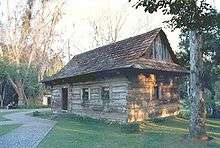White Brazilians
| Brasileiros brancos | |
|---|---|
| Total population | |
|
91,051,646 47.73% of the Brazilian population[1] | |
| Regions with significant populations | |
| Entire country; highest percentages found in the South Region and São Paulo | |
| Languages | |
|
White Brazilians (Portuguese: brasileiros brancos [bɾɐziˈle(j)ɾuz ˈbɾɐ̃kus]) refers to Brazilian citizens of European and Levantine descent who are perceived to be and identify as white. According to the 2010 Census, they totaled 91,051,646 people, and made up 47.73% of the Brazilian population.[1] The main ancestry of white Brazilians is Portuguese, followed by Italian, Spanish, Armenian, German, and other German-speaking nationalities (Austrian, Swiss, Luxembourger and Volga German),[21] Slavic (Polish, Ukrainian, Russian etc), Arabs Levantine (Syrians, Turks and Lebanese), Greeks, French, Scandinavian, Finnish and British.
The states with the highest percentage of white citizens are: Santa Catarina (83,8%), Rio Grande do Sul (82,3%), Paraná (70,0%), and São Paulo (63,1%). Other states with significant rates are: Rio de Janeiro (54,5%), Mato Grosso do Sul (51,1%), Espírito Santo (44,2%), Minas Gerais (45,4%) and Goiás (37,2%).[22][23] São Paulo has the largest population in absolute numbers with 30 million whites.[24]
Conception of white
The Brazilian concept of "white race" might be somewhat different from the concept of "white race" in other countries since race is seen in a spectrum, with different races being perceived as assorted series of continua, but the same concepts can be found in other New World countries or former European colonies like Australia.[25] A comprehensive study presented by the Brazilian Journal of Medical and Biological Research found that on average, white Brazilians are (>83%) European.[26] Another autosomal study carried out by the geneticist Sergio Pena showed that the overwhelming ancestry of "white" Brazilians is European.[26][27]
According to another autosomal DNA study (from 2009) conducted on a school in the poor periphery of Rio de Janeiro the "whites" from a sample of just 90 students (who thought of themselves as "very mixed") were found to carry very little Amerindian or African admixtures (generally about 90% European in ancestry on average). "The results of the tests of genomic ancestry are quite different from the self-made estimates of European ancestry", say the researchers. In general, the test results showed that European ancestry is far more important than those students had thought it would be. The "pardos" were found to have a European ancestry on average of 80% (autosomal ancestry)[28][29] However this study, a random sample of 90 students, 30 of whom had classified themselves as white, 30 as brown, and 20 as black, although important in understanding racial categorizations in Brazil in no way represents the genetic makeup of the entire population of this nation that is the fifth largest in the world by territory and whose different regions were populated by different ethnic groups during different historical periods.
The degree of miscegenation in Brazil varies according to region, being particularly high in the Northeast region, the first to receive large European waves during the colonial period; Brazil was originally colonised only by a few families of Portuguese settlers in the first decades of the 16th century, with some French families included; instead there were many mostly Portuguese individual male adventurers, who tended to reproduce with Amerindian females at first and later with African females, even though the Crown had sent female orphans under royal custody during the colonial period to marry Portuguese male settlers; with noblemen marrying the ones whose fathers had died serving abroad in the military especially in Asian colonies.[30][31] The later settlers from the largest European influx after the discovery of gold and diamonds in Central Brazil post both brazilwood and sugarcane economical cycles, however, would tend also to reproduce with women who were the product of previous miscegenation in Brazil, besides the European female immigrants to whom they were married. According to a genealogical and demographic study carried out by the sociologist Mario Jaramillo e Contreras, member of the Junta Directiva de la Real Asociación de Hidalgos de España, a non-profitable apolitical organization, over 15% of Latin Americans today descend from Iberian nobles who migrated to the Americas during the colonial period after the conceptual three "G"s, gold, God and glory, meaning financial success and military fame and renown, besides bringing new converted souls to the Church.[32]
However, social prejudice connected to certain details in the physical appearance of individual is widespread. Those details are related to the concept of "cor". "Cor", Portuguese for "color" denotes the Brazilian rough equivalent of the term "race" in English, but is based on a complex phenotypic evaluation that takes into account skin pigmentation, hair type, nose shape, and lip shape. This concept, unlike the English notion of "race", captures the continuous aspects of phenotypes. Thus, it seems there is no racial descent rule operational in Brazil; it is even possible for two siblings to belong to completely diverse "racial" categories.[33] Although in the most recent census, with the increased valorisation of indigenous, mixed, black, anusim and gipsy or romani heritage thanks to affirmative action, large numbers of mixed mestizo, castizo, eurasians or mixed white + black, as well as black Brazilians selected black and mixed even with higher socioeconomic status, who probably would've selected white or mixed in the 2000 Census, thus giving a clearer picture on Brazil's demographic makeup.[34] Notwithstanding the new consciousness, the fact that the fertility rate in Brazil has dropped considerably in the last decades, especially among European descendants, Jews, Levantines and Japanese-Brazilians reaching below replacement rates can also be counted as an additional factor.[35][36]
The following are the results for the different Brazilian censuses, since 1872:
| Brazilian Population, by Race, from 1872 to 20101 (Census Data) | ||||||||
|---|---|---|---|---|---|---|---|---|
| Race or Colour | Brancos (whites) | Pardos (multiracial) | Pretos (blacks) | Caboclos | Amarelos (asians) | Indigenous | Undeclared | Total |
| 18722 | 3,787,289 | 3,801,782 | 1,954,452 | 386,955 | - | - | - | 9,930,478 |
| 1890 | 6,302,198 | 4,638,4963 | 2,097,426 | 1,295,7953 | - | - | - | 14,333,915 |
| 1940 | 26,171,778 | 8,744,3654 | 6,035,869 | - | 242,320 | - | 41,983 | 41,236,315 |
| 1950 | 32,027,661 | 13,786,742 | 5,692,657 | - | 329,082 | -5 | 108,255 | 51,944,397 |
| 1960 | 42,838,639 | 20,706,431 | 6,116,848 | - | 482,848 | -6 | 46,604 | 70,191,370 |
| 1980 | 64,540,467 | 46,233,531 | 7,046,906 | - | 672,251 | - | 517,897 | 119,011,052 |
| 1991[37] | 75,704,927 | 62,316,064 | 7,335,136 | - | 630,656 | 294,135 | 534,878 | 146,815,796 |
| 2000[38] | 91,298,042 | 65,318,092 | 10,554,336 | - | 761,583 | 734,127 | 1,206,675 | 169,872,856 |
| 2010[39] | 91,051,646 | 82,277,333 | 14,517,961 | - | 2,084,288 | 817,963 | 6,608 | 190,755,799 |
| Race or Colour | Brancos (whites) | Pardos (multiracial) | Pretos (blacks) | Caboclos | Amarelos (asians) | Indigenous | Undeclared | Total |
| 1872 | 38.14% | 38.28% | 19.68% | 3.90% | - | - | - | 100% |
| 1890 | 43.97% | 32.36% | 14.63% | 9.04% | - | - | - | 100% |
| 1940 | 63.47% | 21.21% | 14.64% | - | 0.59% | - | 0.10% | 100% |
| 1950 | 61.66% | 26.54% | 10.96% | - | 0.63% | - | 0.21% | 100% |
| 1960 | 61.03% | 29.50% | 8.71% | - | 0.69% | - | 0.07% | 100% |
| 1980 | 54.23% | 38.85% | 5.92% | - | 0.56% | - | 0.44% | 100% |
| 1991 | 51.56% | 42.45% | 5.00% | - | 0.43% | 0.20% | 0.36% | 100% |
| 2000 | 53.74% | 38.45% | 6.21% | - | 0.45% | 0.43% | 0.71% | 100% |
| 2010 | 47.73% | 43.13% | 7.61% | - | 1.09% | 0.43% | 0.00% | 100% |
^1 The 1900, 1920, and 1970 censuses did not count people for "race".
^2 In the 1872 census, people were counted based on self-declaration, except for slaves, who were classified by their owners.[40]
^3 The 1872 and 1890 censuses counted "caboclos" (White-Amerindian mixed race people) apart.[41] In the 1890 census, the category "pardo" was replaced with "mestiço".[41] Figures for 1890 are available at the IBGE site.[42]
^4 In the 1940 census, people were asked for their "colour or race"; if the answer was not "White", "Black", or "Asians", interviewers were instructed to fill the "colour or race" box with a slash. These slashes were later summed up in the category "pardo". In practice this means answers such as "pardo", "moreno", "mulato", "caboclo", etc.[43]
^5 In the 1950 census, the category "pardo" was included on its own. Amerindians were counted as "pardos".[44]
^6 The 1960 census adopted a similar system, again explicitly including Amerindians as "pardos".[45]
In the past, ancestry was quite irrelevant for racial classifications in Brazil. A survey in Rio de Janeiro also concluded that "racial-purity" is not important for a person to be classified as white in Brazil. The survey asked respondents if they had any ancestors who were European, African or Amerindian. As much as 52% of those whites reported they have some non-European ancestry: 23% reported to have some Black African ancestry and 29% reported Amerindian ancestry (15% of them reported to have both). Only 56% of those whites did not report any nonwhite ancestry. Thus, in Brazil, one can self-identify as white and still have African or Amerindian ancestry, and such a person has no problem admitting to having nonwhite ancestors.[46] The most recent census in 2010, showed a shift in mentality, where mixed Brazilians whose DNA might have European markers in a range spanning from 70% to 85%, overwhelmingly chose to identify with their mixed racial background, rather than white. These backgrounds being predominantly Caboclo or mestiço, known in the Spanish-speaking world as Mestizo and Castizo for the most part, but also black and white mix, or black plus Native plus white, what in the past was known as Octoroon, as well as Romani or Gipsy, Anusim or Dutch and Lusitanian Crypto Jew, and Eurasian or Hāfu and ainoko.[34] Affirmative action and identity valorisation being factors, albeit fertility rate among European ancestry, Levantine and Jewish citizens plummeting being another factor part of the equation.
| Self-reported ancestry of whites from Rio de Janeiro (2000 survey)[46] | ||||
|---|---|---|---|---|
| Ancestry | ||||
| Percentage | ||||
| European only | 48% | |||
| European and African | 25% | |||
| European, African and Amerindian | 15% | |||
| European and Amerindian | 14% | |||
Given this ambiguity and fluidity, there are people who claim that the few racial categories offered by the IBGE are not enough. When Brazilians answer to open-ended questions about race, up to 143 different race-color terms are brought. The most common is "moreno", a category that refers to a wide spectrum of phenotypes. It can mean "dark-haired", "tawny", "suntanned", but it is also used as a euphemism for "pardo" and "black", according to context.[47] It is not a synonym with "pardo", however, since each word refers to widely different sets of people.
An important factor about whiteness in Brazil is the racial stigma of being Amerindian or black, which is undesirable and avoided for a large part of the population. Scientific racism largely influenced race relations in Brazil since the late 19th century.[46] The predominant nonwhite, mostly Afro-Brazilian population was seen as a problem for Brazil in the eyes of the predominantly white elite of the country. In contrast to some countries, like the United States or South Africa, which tried to avoid miscegenation, even imposing anti-miscegenation laws, in Brazil, miscegenation was always legal. What was expected was that miscegenation would eventually turn all Brazilians into whites.[46]
As a result of that desire of whitening its own population, the Brazilian ruling classes encouraged the arrival of massive European immigration to the country. In the 1890s 1.2 million European immigrants were added to the country's 5 million whites. Today the Brazilian areas with larger proportions of whites tend to have been destinations of massive European immigration between 1880 and 1930.[46]
Even though expectations of the Brazilian elite to whiten its own population through European immigration came to an end in the 1930s, the whitening ideology still influences racial relations in Brazil today. In general, the population still expects that blacks must biologically whiten themselves by marriage with lighter skinned people, or culturally through the assimilation of the traditions of the dominant white population.[46] That leads mixed-race people to be perceived as whites,[46] and this is more evident when a nonwhite person becomes wealthier and is incorporated in the ruling classes.
For example, Brazilian writer, Joaquim Maria Machado de Assis, was a mulatto. However, once he gained fame and prestige, people started to accept him as a white man, and on his death certificate he was classified as a "white man".[48] Better educated and wealthier Brazilians usually see themselves as whites (a strict association between wealth and whiteness).[46] A study[46] showed that when mixed-race Brazilians get wealthier they start to be perceived as whites by others, who usually avoid associating a wealthy person with a non-white racial category. But only mixed-race people can "become white" when they get richer, while typically black people will always be perceived as blacks, no matter how rich they get.[46]
It showed that less educated black Brazilians avoid being associated as Black (usually choosing the word "Moreno": literally "tanned", "brunette", "with an olive complexion"[49] – to classify themselves). Better-educated black Brazilians, however, are more than eight times more likely as persons of a low level of education to identify themselves as blacks, while better educated mixed-race people usually jump to the white category.[46] Research published by the American Sociological Review found that the growth of the pardo population would be in part due to large numbers of blacks "whitening" themselves by reporting to be brown (mulatto). Studies have found a large trend in reclassification (whitening) from black to brown in the 1950 to 1980 period, a much smaller one from white to pardo, and a similar but less pronounced pattern between 1980 and 1990. Academics attribute this switch from black to pardo to high rates of black upward mobility during the 1970s, consistent with a "money whitens" hypothesis, that is blacks would whiten themselves by reporting as pardo the more wealthy they become. These results would demonstrate a tendency for what is called branqueamento, that means that blacks would tend to self-classify as whiter. In this case, differences found in the share of blacks between census results would demonstrate that blacks tend to self-classify as pardos. Some researchers suggested to merge the two into a single Afro-Brazilian category (e.g., Lovell 1994; Wood and Carvalho 1988; Wood and Lovell 1992).[50] Brazilian geneticist Sérgio Pena has criticised American scholar Edward Telles for lumping "pretos" and "pardos" in the same category. According to him, "the autosomal genetic analysis that we have performed in non-related individuals [...] shows that it does not make any sense to put "pretos" and "pardos" in the same category".[51]
The integration of races in Brazil did not build a racial democracy, where racism would not exist because all Brazilians saw themselves as equal because of their common multiracial heritage. Even though this theory was dominant in Brazil for decades, although it is still followed by some today, most scholars now think that miscegenation in Brazil created not an egalitarian society but a society where lighter-skinned people are found mostly on the top and the darker-skinned are mostly found on the bottom.[52]
History
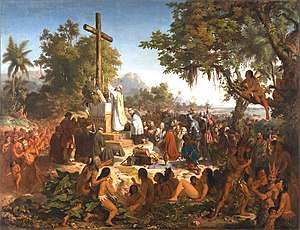
Brazil received more European settlers during its colonial era than any other country in the Americas. Between 1500 and 1760, about 700,000 Europeans immigrated to Brazil, compared to 530,000 European immigrants in the United States.[53][54]
Practically all Europeans coming to Brazil before 1818 were Portuguese. Available data seems to point that most Portuguese settlers in Brazil came from northern Portugal, especially from Minho (in 1801, 45% of the Portuguese established in São Paulo were "minhotos", 20% from the Azores Islands, 16% from Lisbon and 19% from other parts[55]). Another significant portion came from the Portuguese Atlantic Island of Madeira.
An important feature of the Portuguese colonization was the overwhelming predominance of males. This disproportion was a problem during much of the colonial period. The Portuguese Crown even sent orphaned women under royal wardship for marriage with the settlers known as Órfãs d'El-Rei,[56][57][58][59] but a large part of the settlers were involved in relationships with indigenous women and African slaves. It is remarkable that most Portuguese settlers arrived in Brazil in the 18th century: 600,000 in a period of only 60 years. The exploitation of gold and diamonds in the region of Minas Gerais has been a crucial factor in the arrival of this contingent of colonists.[53]
New Christians
The "New Christians" was a term used to refer to Portuguese Jews who converted to Roman Catholicism, and their known baptized descendants. Portugal has always had a sizable Jewish community inhabiting its territory. There was a healthy degree of acceptance and tolerance towards Jewish religion, language and culture. However, after the inquisition set a foothold in Spain about 60.000 Jews fled to Portugal where King John II sold them a residency. Five years later, when the Inquisition moved to Portugal, all people of Jewish ancestry were forced to be baptized and became the New Christians. Many moved from Portugal and established themselves in Brazil. According to researcher Flávio Mendes de Carvalho in his book The Jewish Roots of Brazil, between 25% and 35% of the Brazilian population descends from these New Christians, which is the equivalent of 66 million people.
Non-Portuguese presence in colonial Brazil
Before the 19th century, the French invaded twice, establishing brief and minor settlements (Rio de Janeiro, 1555–60; Maranhão, 1612–15);[60] In 1630, the Dutch made the most significant attempt to seize Brazil from Portuguese control. At the time, Portugal was in a dynastic union with Spain, and the Dutch hostility against Spain was transferred to Portugal. The Dutch were able to control most of the Brazilian Northeast – then the most dynamic part of Brazil – for about a quarter century, but were unable to change the ethnic makeup of the colonizing population, which remained overwhelmingly Portuguese by origin and culture.[61] Sephardic Jews of Portuguese origin moved from Amsterdam to New Holland;[61] but in 1654, when the Portuguese regained control of Brazil, most of them were expelled, as well as most of the Dutch settlers.[62] A group of Dutch and Portuguese Jews then moved to North America, forming a Jewish community in New Amsterdam, today's New York city, while a few of the Dutch colonists settled in the highlands in the countryside of Pernambuco known as Borborema Plateau, a region part of the ecosystem known as agreste between the coastal forest zona da mata and the semiarid sertão in the Northeast.[63][64][65][66]
Aside these military attempts, a very small number of non-Portuguese people appear to have managed to enter Brazil from European countries other than Portugal.[67]
However, in the Southern Brazilian areas disputed between Portugal and Spain, Spanish colonists largely contributed for the ethnic formation of the local population, denominated Gaúchos. A genetic research conducted by FAPESP (Fundação de Amparo à Pesquisa do Estado de São Paulo) on Gaúchos from Bagé and Alegrete, in Rio Grande do Sul, Southern Brazil, revealed that they are mostly descended from Spanish ancestors, and less from Portuguese, with 52% of them having Amerindian MtDNA (similar to that found in people who live in the area of the Amazon rainforest, and significantly higher than the national average – 33% – among Brazilian whites) and 11% African MtDNA.[68] Another study also concluded that for the formation of the Gaúcho there was a predominance of Iberians, particularly Spaniards.[69] To evaluate the extension of Gaucho genetic diversity of the Gauchos, and retrieve part of their history, a study with 547 individuals, of which 278 were Native Americans (Guarani and Kaingang) and 269 admixed from the state of Rio Grande do Sul, was carried out. The genetic finding matches with the explanation of sociologist Darcy Ribeiro about the ethnic formation of the Brazilian Gaúchos: they are mostly the result of the miscegenation of Spanish and Portuguese males with Amerindian females.[70]
Another genetic study found possible relics of the 17th-century Dutch invasion in Northeastern Brazil.[71]
Immigration
It was only in 1818 that the Portuguese rulers abandoned the principle of restricting settling in Brazil to Portuguese nationals. In that year over two thousand Swiss migrants from the Canton of Fribourg arrived to settle in an inhospitable area near Rio de Janeiro that would later be renamed Nova Friburgo.[72]
The arrival of German immigrants had great importance for the demographics of Southern Brazil. They founded rural communities that later became prosperous cities, as was the case of São Leopoldo, Joinville and Blumenau.[73]
The end of the slave trade (1850) and the abolition of slavery (1888) prompted the Brazilian State to promote European immigration to Brazil. The production of coffee, the main product of Brazil at the time, began to suffer a shortage of workers. From 1876, Italian immigrants began to enter Brazil in huge numbers. From 1884 to 1933, 1.4 million Italians immigrated to Brazil,[74] 70% of whom settled in São Paulo.
The period of the great immigration, between 1876 and 1930, brought to the country more than 5 million Europeans. Most were Italians and Portuguese, followed by Spaniards, Germans, Poles,[75] and Ukrainians. It is notable that most of these immigrants settled in Southern and Southeastern Brazil.
Impact of immigration

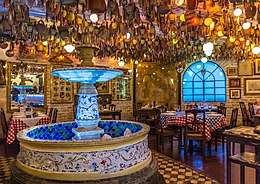
Brazilian demographers have long discussed the demographic impact of the wave of emigration in the late 19th and early 20th centuries. According to Judicael Clevelário,[76] most studies about the impact of immigration have followed Giorgio Mortara's conclusions in the 40's and 50's. Mortara[77] concluded that only about 19% of the demographic growth of Brazil, from 1840 and 1940 was due to immigration, and that the population of immigrant origin was of 16% of the total population of Brazil.[76]
However, according to Clevelário, Mortara failed to properly take into account the full endogenous growth of the population of immigrant origin,[78] due to the predominantly rural settlement of the immigrants (rural regions tend to have higher natality rates than cities). Clevelário, then, besides extending the calculations up to 1980, remade them, reaching somewhat different conclusions.
One of the problems of calculating the impact of immigration in Brazilian demography is that the return rates of immigrants are unknown. Clevelário, thence, supposed four different hypotheses concerning the return rates. The first, that he deems unrealistically high, is that 50% of the immigrants to Brazil returned to their countries of origin. The second is based on the work of Arthur Neiva, who supposes the return rate for Brazil was higher than that of USA (30%) but lower than that of Argentina (47%). The third hypothesis is taken from Mortara, who postulates a rate of 20% for the 19th century, 35% for the first two decades of the 20th century, and 25% for 1920 onwards. Although Mortara himself considered this hypothesis underestimated, Clevelário thinks it is the closest to reality. The last hypothesis, also admittedly unrealistic, is that of a 0% rate of return, which is known to be false.[79]
Clevelário's conclusions are as follows: considering hypothesis 1 (unrealistically high), the Population of Immigrant Origin in 1980 would be 14,730,710 people, or 12.38% of the total population. Considering hypothesis 2 (based on Neiva), it would be 17,609,052 people, or 14.60% of the total population. Considering hypothesis 3 (based on Mortara, and considered most realistic), it would be 22,088,829 people, or 18.56% of the total population. Considering hypothesis 4 (no return at all), the Population of Immigrant origin would be 29,348,423 people, or 24.66% of the total population[80]
Clevelário believes the most probable number to be close to 18%, higher than Mortara's previous estimate of 1947.[81]
According to the Census of 1872, Black and "Brown" people made up the majority (58%) of Brazil's population. The white population grew faster than the non-White population due to the subsidized immigration of Europeans in the late 19th and early 20th centuries. By 1890, the African-descended population was reduced to 47% and the Amerindian to 9%.[82] The disproportionally fast growth of the white population, due to mass immigration, lasted until 1940, when its proportion in the Brazilian population peaked at 63.5%.[82]
According to a genetic study, the European immigration to Brazil in the 19th and 20th centuries left a "strong imprint" in the genetics of the Brazilian population, leading to the "whitening" of Brazil. The massive European immigration promoted by the Brazilian government after 1872 that brought nearly 6 million Europeans in order to "whiten" the country's population had an important effect, and it manifests in a predominance (over 70%) of European ancestry in white Brazilian, as well as a large European admixture (37.1%) in Black Brazilians. The scholars divided the formation of the Brazilian population into three periods: the first when the country was inhabited only by Amerindians, who contributed for the early formation of the population; the second was during the large influx of slaves from Africa until 1850 and the third was during the large influx of European immigrants in the late 19th and early 20th centuries.[83] In fact, until the mid-19th-century, white people never exceeded 30% of the population in Brazil, while Caboclos, Amerindians, Blacks and Mulattoes always predominated.[84]
Another study has pointed out that the European ancestry is dominant throughout Brazil at 80%, which means that even in the states not hit by the most recent waves of immigration, European ancestry dominates in the population as a whole. "A new portrayal of each ethnicity contribution to the DNA of Brazilians, obtained with samples from the five regions of the country, has indicated that, on average, European ancestors are responsible for nearly 80% of the genetic heritage of the population. The variation between the regions is small, with the possible exception of the South, where the European contribution reaches nearly 90%. The results, published by the scientific magazine 'American Journal of Human Biology' by a team of the Catholic University of Brasília, show that, in Brazil, physical indicators such as skin colour, colour of the eyes and colour of the hair have little to do with the genetic ancestry of each person, which has been shown in previous studies".[85]
Origins
White Brazilians are descended either from colonial settlers, who came from Portugal from 1500 to 1822, or from the diverse groups of immigrants who arrived after independence. The latter had a greater impact in the demography of the Southern states and of São Paulo.
Different from the colonists who settled in North America, who brought their entire families, the Portuguese colonization was almost exclusively composed of men, with a limited presence of women. This lack of women worried the Jesuits, who asked the Portuguese King to send any kind of Portuguese women to Brazil, even the socially undesirable (e.g. prostitutes or women with mental maladies such as Down Syndrome) if necessary.[58][59] The Crown responded by sending several groups of Iberian orphan maidens to marry both cohorts of marriageable men, the nobles and the peasants. Some of which were even primarily studying to be nuns.[58][86] The Crown also shipped over many Órfãs d'El-Rei of what was considered "good birth" to colonial Brazil to marry Portuguese settlers of high rank. Órfãs d'El-Rei (modern Portuguese órfãs do rei) literally translates to "Orphans of the King", and they were Portuguese girl orphans in nubile age.[56] There were noble and non-noble maidens and they were daughters of military compatriots who died in battle for the king or noblemen who died overseas and whose upbringing was paid by the Crown.[56] Bahia's port in the East received one of the first groups of orphans in 1551.[57] But most of the first Portuguese settlers also procreated with native Amerindians or African slave women. Over time, the number of Portuguese women immigrating to Brazil grew, but the gender imbalance was never significantly reduced. This male predominance prevailed throughout the colonial period. Historically, the male Portuguese settler preferred to marry a Portuguese born female. But, since their number in Brazil was very small, the second option was to marry a white Brazilian, born to Portuguese parents. The third option was a white Brazilian female of distant Portuguese origin. The scarce presence of white women, either Portuguese or Brazilian, caused the high degree of miscegenation in colonial Brazil.
Even though the immigration of non-Portuguese was allowed from 1818 on, the Portuguese predominance continued way up to the 1870 years. A consistent flux of German immigrants started to arrive to Southern Brazil, briefly interrupted by the Ragamuffin War, but the amount of Portuguese immigrants was much bigger during this period.
The census of 1872, counted 3,787,289 whites in Brazil. Despite the largest arrivals of European immigrants, particularly between 1880 and 1930, the nowadays white Brazilian population has a considerable proportion of citizens that are still mainly descended from whites of colonial extraction (Lusitanians but also Spaniards, Dutch, French, Anusim and others), especially those groups in the Northeast, the borders of Rio Grande do Sul with Argentina and Uruguay, and the Center-West, with the exception of Mato Grosso do Sul, partially populated by Italian, German and Polish farmers from São Paulo and the South, just like the case of Brasiguaios, Brazilian landowners in Paraguay.[87][88][89]
South American oligarchies, which remained predominantly of European origin, believed – in syntony with the racialist theories then widespread in Europe – that the large numbers of blacks and mixed Amerindians that made up the majority of the population were a handicap to the development of their countries. As a result, countries such as Argentina, Uruguay and Brazil started to encourage the arrival of European immigrants, in order to make the white population grow and to dilute the African and Amerindian blood in their population. Argentina even has an article in its Constitution prohibiting any attempt to prevent the entry of European immigrants in the country.[90] In the case of Brazil, the immigrants started arriving in huge numbers during the 1880s. From 1886 to 1900, almost 1.4 million Europeans arrived, of whom over 900,000 were Italians. During this period of 14 years, Brazil received more Europeans than during the over 300 years of colonization.
According to Darcy Ribeiro before 1850 no more than 500,000 Europeans settled in Brazil[91] IBGE estimated that the number was close to 700,000 Portuguese during the 18th century.[53] The mass European immigration to Brazil only started in the second half of the 19th century, from 1850 to 1970 over 6 million Europeans arrived, because of three main reasons:
- to "whiten" Brazil, since the Amerindian and African elements predominated in the population, a fact that was considered a problem by the local elite, that considered these races inferior. Bringing European immigrants was seen as a way to "improve" the racial composition of the local population;
- to populate inhospitable areas of Brazil, mostly the Southern provinces;
- to replace African manpower, since the Atlantic slave trade was effectively suppressed in 1850 and coffee plantations were spreading in the region of São Paulo.
These immigrants had a larger and more visible impact in the state of São Paulo, along with the three southern states of Rio Grande do Sul, Santa Catarina and Paraná. In the southern states there were entire regions (such as the Serra Gaúcha and Vale do Jacuí) populated by German and Italian-speaking inhabitants. The immigrants remained closed in ethnic communities for decades. The Portuguese language only started to be used by these communities many decades after their arrival, as a result of their contact with Brazilians and with immigrants from other countries, but also because of the forced assimilation during the Getúlio Vargas's government, mostly inside the German community. In contrast to the early Portuguese colonists, these immigrants arrived with their entire families in Brazil, with large numbers of women and children. As a result, the areas where they were concentrated, most remarkably the central parts of Southern Brazil, became predominantly white.
In São Paulo, paulistas of Italian descent outnumbered those of earlier extraction. In this region, Italians, Portuguese, Spaniards and Arabs were easily integrated, since they had a close contact with the large local Brazilian population. At first working on coffee farms, later they moved to cities and participated in the process of industrialization of Brazil.
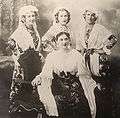 Italian Brazilian girls in Caxias do Sul, 1934.
Italian Brazilian girls in Caxias do Sul, 1934.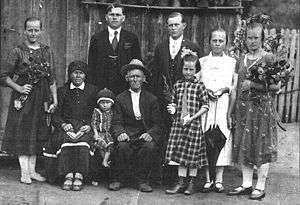 Ukrainian family in Brazil, 1891.
Ukrainian family in Brazil, 1891.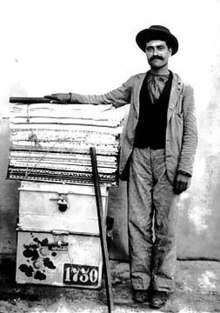 Portuguese immigrant in Rio de Janeiro, 1895.
Portuguese immigrant in Rio de Janeiro, 1895. Italian family in Southern Brazil, 1901.
Italian family in Southern Brazil, 1901.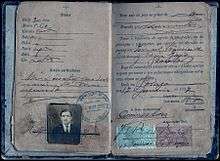 Passport of a Portuguese immigrant, 1927.
Passport of a Portuguese immigrant, 1927.
 European immigrants working in a coffee plantation in the State of São Paulo.
European immigrants working in a coffee plantation in the State of São Paulo. Arrival of Empress Teresa Cristina on board the frigate Constituição in Brazil, 1843.
Arrival of Empress Teresa Cristina on board the frigate Constituição in Brazil, 1843.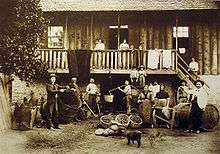 Agricultural fair Caxias do Sul, c. 1918.
Agricultural fair Caxias do Sul, c. 1918. Pavilions in Dante Alighieri square for the election of the Festa da Uva queen in 1932.
Pavilions in Dante Alighieri square for the election of the Festa da Uva queen in 1932. Workers of the metallurgical plant Eberle.
Workers of the metallurgical plant Eberle.
Regions of settlement
The first economic activity the Portuguese crown devised in Brazil—the collection of Brazilwood—was not conducive to an actual occupation of the territory. The establishment of a few "feitorias" that conducted the trade was not enough to populate Brazil. The growing competition from other colonial powers—especially France—led the Portuguese into finding other economic activities that could serve as a base for a permanent and solid integration of Brazil into Portuguese domains. The first such activity to attain success was the cultivation of sugarcane—and the associated extraction of sugar, since sugarcane could not be transported overseas without deteriorating. This activity was also complementary with the slave trade that the Portuguese were starting, at that moment, from their African colonies of Angola and Mozambique. Sugarcane proved very well adapted to the climate of the Northeastern litoral, so the first stable and prosperous Portuguese settlements—and consequently, the first stable and prosperous centers of white population in Brazil—where located in that region.
The economy of sugarcane culture being centered in exporting to Portugal, other economic activities appeared to fulfill the necessities of the region. Remarkably, husbandry spread into the arid hinterland, where it remained the most important economic activity for centuries.
The region around São Vicente, in modern São Paulo state, remained less developed, with a weaker integration to the colonial economy. This probably prompted the inhabitants to explore the hinterland. In theory looking for gold and gems, in practice they engaged in expeditions with the objective of capturing and enslaving Amerindians. These slaves were used in the incipient agriculture around São Paulo, which, to the end of the 16th century became specialised in wheat, as a commercial crop that could be sold in other parts of Brazil.[92]
Around 1700, the paulistas found gold in the region that is now Minas Gerais. Together with the growing competition of Caribbean sugar, this made the center of the Brazilian economy move to the Southwest. The administrative center of the colony was moved from Salvador to Rio de Janeiro. The discovery of mineral wealth caused the influx of Portuguese settlers to redirect from the Northeast to the mining region, and the number of Portuguese leaving for Brazil to increase greatly; also there was a change in the social profile of those coming to Brazil. Agriculture needed substantial investments, but gold mining required much more courage and less initial capital, and the proportion of poor Portuguese among the newcomers increased considerably.
The Southern region was also first settled by the paulistas. Arriving there in search of the Amerindians in the Jesuit reductions, they subsequently raided the region in search of the cattle gone astray with the destruction of the Missões, first for the leather, then organising a commercial circuit that moved cattle on feet to the mining region (ciclo do gado a pé). As a result, the Portuguese domain extended firmly to the south, threatening the control of the Northern bank of the Plata by the Spanish.
Immigrants



Most of the 6.831.000 European immigrants that entered the country between 1821 and 1932 settled in São Paulo (state) and other Southeastern states:[93] São Paulo received most of the Italians (Veneto, Lombardy, Campania, Tuscany, Calabria, Liguria, Piedmont, Umbria, Emilia-Romagna, Abruzzi e Molise and Basilicata) and Spaniards (Galicians, Castilians and Catalans) in the late 19th and early 20th centuries, and from the 1910s on most of the Lithuanians, Dutch, French, Hungarians, Baltic Finns, Ashkenazi Jews (from Poland, Germany, Austria, Hungary, Lithuania, Russia and Czechoslovakia), Latvians, Greeks, Armenians, Czech, Croatians, Slovenians, Bulgarians, Albanians and Georgians;[94][95][96][97][98][99][100][101][102][103][104][105] Rio de Janeiro (state) received most of the Portuguese immigrants followed by SP, as well as most of the Swiss and Belgians. Together with São Paulo and Santa Catarina, RJ was one of the main destinations for Swedes, Norwegians, Danes but also French and received the second largest number of Jews after SP. São Paulo and Rio de Janeiro followed by Paraná also received most of the English-Welsh and Scots;[96][99][106][107][108][109][110] The countryside of Espírito Santo was mainly populated by people arriving from Germany, especially Pomeranians (Prussia), Switzerland, Italy, the Netherlands, Poland, Denmark, Luxembourg, France, Romania, Slovakia and Iberia, comprising chiefly Catalans but including Basques and Andorrans.[97][100][105][111][112] Minas Gerais received generally Italians, looking for arable acreage in the 19th century, and Portugueses early in the 18th during the Gold and Diamond Rush.[96] MG was also destination for Germans, Czech, Bulgarians, Romanians, Hungarians, Ashkenazi Jews, Spaniards, Serbians, Greeks, Armenians and part of the additional 170k Lebanese who settled the country.[104][112][113]
However, the impact of the European immigration was larger in Southern Brazil, because even though it got a lesser migration, since it had a very small population, the immigration's impact was greater to its demography when compared to other Brazilian regions. The main concentrations in Rio Grande do Sul were Venetian Italians where their dialect is still spoken and Germans from the Hunsrück region of Germany (Rhineland-Palatinate) who also kept their Hunsrückisch dialect known as Riograndensisch, followed by Poles. Their arriving numbers supplanted the previous Iberian population, founding cities like Novo Hamburgo and Garibaldi.[100][105][114] German immigrants first arrived in 1824 settling in the Sinos River Valley, where one of the first colonies to take an urbanized figure was Hamburger Berg, future Novo Hamburgo, dismembered from or spun out of São Leopoldo, dubbed the cradle of German culture in Brazil.[115] Its capital, Porto Alegre, has the third largest Jewish population in the nation.[116]
The vast majority of Slavs is concentrated in Paraná, mainly Poles, Ukrainians, Belarusians and Russians, followed by German and Italian dwellers in the countryside who also arrived to populate the sparsely inhabited South. Some localities like Mallet, a 19th-century settlement founded by Poles from Austrian Galicia (Eastern Europe) and Ukrainians that grew up to be a town, still maintain both their languages and traditions in a Polish-Ukrainian continuum. After 1909 Dutch settlers became accountable for the dairy farming development in the prairies region of the state, known as Campos Gerais do Paraná, where today are the towns of Castro and Carambeí dubbed Little Holland. The Castro region also received many Lithuanians. The capital, Curitiba, is home to a large figure of Volga Germans that outnumbered the initial and primary Bandeirante descent population during the Imperial period, Faroese people and other Scandinavians, as well as to Slavs, Italians, French, Swiss, Spaniards and one of the country's Jewish communities.[96][100][104][105][114][117][118][119]

Santa Catarina where over 50% of the population has German, Austrian and Luxembourgish ancestry (the local Hunsrückisch is known as Katharinensisch,[120] East Pomeranian is still spoken in the town of Pomerode and Southern Austro-Bavarian by the Tyrolean population in Treze Tílias) was also the main destination for Danes and the state that was sparsely populated and had its shore mainly inhabited by Azoreans in the 18th century (e.g. Laguna born Anita Garibaldi, wife and comrade-in-arms of Italian Unification revolutionary Giuseppe Garibaldi), also received Italians, French, Swedes, Norwegians, Swiss, Lithuanians and Latvians, Estonians, Finns, Poles, Slovenians, Croatians, Belgians and Spaniards to populate its interior during the 19th century. The town of Brusque founded by Austrian Baron von Schneeburg bringing German families from the Grand Duchy of Baden to settle in the northeast of Santa Catarina, besides receiving additional waves of Italians from the Tyrol–South Tyrol–Trentino Euroregion, Poles and Swedes, was also one of the destinations in the South and Southeast for American Confederate settlers in 1867, differing from São Paulo and Paraná colonies, where the American Confederate presence gave birth to new towns such as Americana in São Paulo. Neighboring towns such as Nova Trento founded in 1875, similarly received subjects from the Austro-Hungarian Empire due the fact that Italian-speaking Tyroleans known as trentinos and Germans from the Kingdom of Prussia, historic Swabia and Baden faced an immense crisis in the agricultural sector caused by the conflicts of the unification of Italy and Germany respectively, that weakened local trade. Istrian Italians under the Austrian Empire rule also fled Istria to settle in Brazil, and a few towns like Nova Veneza, founded in 1891 still have an over 90% Venetian population of which many still speak the Talian dialect. Most Venetians settled after the Third Italian War of Independence in 1866, when Venice, along with the rest of the Veneto, became part of the newly created Kingdom of Italy.[96][99][100][105][112][114][121][122]
| Some southern Brazilian towns with a notable main ancestry | |||
|---|---|---|---|
| Town name | State | Main ancestry | Percentage |
| Nova Veneza | Santa Catarina | Italian | 95%[123] |
| Pomerode | Santa Catarina | German | 90%[124] |
| Prudentópolis | Paraná | Ukrainian | 70%[125] |
| Treze Tílias | Santa Catarina | Austrian | 60%[126] |
| Dom Feliciano | Rio Grande do Sul | Polish | 90%[127] |
The Europeanization was so longed that by 1895 the government of São Paulo spent about 15% of its annual budget on subsidies for immigrants.[128]
Portuguese
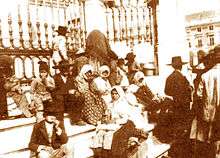
After independence in 1822, about 1.79 million Portuguese immigrants arrived in Brazil, most of them in the late 19th and early 20th centuries.[129] Most of these immigrants settled in Rio de Janeiro.[96]
Portuguese immigration into Brazil in the 19th and 20th centuries was marked by its concentration in the states of São Paulo, Rio de Janeiro and Espírito Santo. The immigrants opted mostly for urban centers. Portuguese women appeared with some regularity among immigrants, with percentage variation in different decades and regions of the country. However, even among the influx of Portuguese immigrants at the turn of the 20th century, there were 319 men to each 100 women among them.[130] The Portuguese were different from other immigrants in Brazil, like the Germans,[131] or Italians[132] who brought many women along with them (even though the proportion of men was higher in any immigrant community). Despite the smaller female proportion, Portuguese men married mainly Portuguese women. Female immigrants rarely married Brazilian men. In this context, the Portuguese had a rate of endogamy which was higher than any other European immigrant community, and behind only the Japanese among all immigrants.[133]
An additional figure of 1.2 million Portuguese arrived between 1951 and 1975 to settle mostly in the Southeast.[134] Nowadays, Lusitanians constitute the biggest group of foreigners living in the country, with over 690,000 Portuguese nationals currently living in Brazil.[135] The vast majority arrived in the last decade. The first semester of 2011 solely had an increase of 52 thousand Portuguese nationals applying for a permanent residence visa while another large group was granted Brazilian citizenship.[136][137]
Italians

About 1.64 million Italians arrived in Brazil, starting in 1875.[138] First they settled as small land owners in rural communities across Southern Brazil. In the late 19th century, the Brazilian State offered land to immigrants, in conditions that made it possible to buy them.[139] Later, their destination were mostly the coffee plantations in the Southeast, especially the states of São Paulo and Minas Gerais, where they initially worked for the local landowners, either for a wage or under a contract that allowed them to use a portion of land for subsistency, in exchange for labour in the plantation.[140]
Italians made up the main group of immigrants to Brazil in the late 19th century.[99]
The vast majority of the Italian settlers came from Veneto and, according to Ethnologue, today around 4 million people still speak the Venetian dialect called Talian or Veneto in Southern Brazil.[141] Veneto was followed mainly by Campania, Lombardy, Calabria, Abruzzi e Molise, Tuscany and Emilia Romagna.[94]
In São Paulo capital, which came to be labeled an "Italian city" in the early twentieth century, Italians engaged mainly in the incipient industry and urban services activities. They came to represent 90% of the 60,000 workers employed in São Paulo factories in 1901.[142]
Spaniards
About 720,000 Spaniards came to Brazil, starting in the late 19th century.[129] Most of them were attracted to work in the coffee plantations in the State of São Paulo.[96]
In all Brazilian states, the immigrants from Galicia predominated, and those were predominantly males, who emigrated alone, settled in urban centers and paid for their passage by ship.[143] The only exception was the state of São Paulo, destination for the vast majority of the Spaniards, between 66% and 75% of the total. In São Paulo, 55% were from Andaluzia, and only 23% from Galicia.[143] Those had their passage by ship paid by the Brazilian government, emigrated in families and were taken to the coffee farms for the needed manpower. Galician smallholders and artisans settled mainly in urban areas of Brazil and eventually became factory workers.[144] One factor that contributed to the more rapid process of assimilation and acculturation of the community of Spanish origin in Brazil was, in addition to linguistic and cultural proximity (accentuated by the high presence of Galicians whose Galician language is closer to Portuguese due the fact that they share or belong to the same linguistic system, differently from Castilian), the ease with which both Spanish men and women married Brazilians, mostly Lusitanian Brazilians: 64.7% of Spanish men married Brazilian women and 47.2% of Spanish women married Brazilian men.[143]
Germans and Austrians
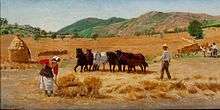
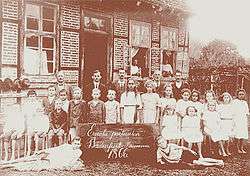
Brazil is home to the second largest German-Austrian population outside their respective nations, after the USA. And German is the second most spoken language in the country.[4][145][146] According to Ethnologue, Standard German is spoken by 1.5 million people and Brazilian German encompass assorted dialects, including Riograndenser Hunsrückisch spoken by over 3 million Brazilians.[9][147][148] Today more speakers of the East Pomeranian dialect can be found in Brazil than its original Low German-speaking land, and the dialect is especially spoken in Pomerode, Santa Catarina as well as in the states of Espírito Santo and Rio Grande do Sul where it enjoys co-official status.[12] Other dialects include Luxembourgish (part of the Moselle Franconian dialects group together with Hunsrik), Swiss Alemannic, Low Saxon–rooted Plautdietsch, spoken by ethnic German Mennonites from the former Soviet Union (since the 1930s),[13][14] Southern Austro-Bavarian, Tyrol dialect and Vorarlberg High Alemannic German, especially in Dreizehnlinden, Santa Catarina (since 1933),[15] and Danube Swabian in Guarapuava, Paraná (since 1951).[19]
The author Stefan Zweig who wrote about Brazil, and the Habsburg-Lorraine Maria Leopoldina of Austria, Empress consort of Brazil, are among the most prominent Austrians to settle in Brazil.
About 260,000 Germans settled in Brazil.[149] They were the fourth largest nationality to immigrate to Brazil, after the Portuguese (1.8 million), the Italians (1.6 million), the Spaniards (0.72 million); Germans were followed by the Japanese (248,000), the Poles and the Russians.[149]
The vast majority settled in states of São Paulo, Rio Grande do Sul, Santa Catarina, Paraná, and Rio de Janeiro. Less than 5% of Germans settled in Minas Gerais, Pernambuco, and Espírito Santo.[150]
The most influenced state by the German immigration was Santa Catarina, where Germans and Austrians were about 50% of all foreigners (Germans, 40%; Austrians, 10%), it was the only state where Germans were the principal nationality among foreigners. Other states with some significant proportion were Rio Grande do Sul (Germans, slightly over 25%) and Paraná (Germans, 10%; Austrians, 10%).[151] The Oktoberfest of Blumenau in Santa Catarina is Brazil's largest and the world's second largest (after Germany's main beer festival in Munich).[152]
Endogamy was the rule among the 19th-century German, Austrian and Luxembourgish colonies and young married women in the homogeneously isolated German colonies settled in the three Southern states had a high fertility rate of 8-9 children per woman; that was especially the case for those youths married between 20 and 24 years old.[112]
In Rio Grande do Sul, the House of Representatives recognized Hunsrückisch as an official Intangible cultural heritage of historical value to be preserved.[153][154]
Polish
Poles came in significant numbers to Brazil after 1870. Most of them settled in the State of Paraná, working as small farmers.[104][117][118] From 1872 to 1919, 110,243 "Russian" citizens entered Brazil. In fact, the vast majority of them were Poles ("Russian" Catholics), since, up to 1917, a part of Poland was under Russian rule due to the Partitions of Poland and ethnic Poles immigrated with Russian passports.[155]
Polish can still be heard in small towns such as Mallet, Paraná, where the vast majority of the population descends from Western and Northern Slavic settlers who arrived in Brazil in the 1890s (mostly Poles who came from Galicia which was under Austrian rule then).[7][8][9][118]
The city of Curitiba has the second largest Polish diaspora in the world (after Chicago) and Polish music, dishes and culture are quite common in the region.[105] Curitiba was largely influenced by the Polish descent mayor Jaime Lerner, originally an architect and urban planner.
Swiss
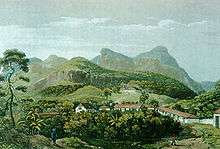
In 1818, King John VI of Portugal and Brazil, then resident in Rio de Janeiro, authorized the entry into Brazil of Swiss immigrants from the canton of Fribourg (Switzerland). The parish founded in 1819 was given the name of "São João Batista de Nova Friburgo" (Saint John the Baptist of New Fribourg), German: Neufreiburg.[156]
Luxembourgers
An estimated 80,000 Brazilians are of Luxembourgian descent due to a small immigration of Luxembourgers to Brazil, mostly during the late 19th an early 20th centuries.[157][158]
Ukrainians
More than 20,000 Ukrainians came to Brazil between 1895 and 1897, settling mostly in the countryside of Paraná and working as farmers in the state, today a land of regnant Orthodox churches, where Slavic traditions can be witnessed all over the territory[117][119][159]
Dutch (Netherlands) and Flemish
Dutch people first settled in Brazil during the 17th century, with the state of Pernambuco being a colony of the Dutch Republic from 1630 to 1661.[65] During the 19th and 20th century, immigrants from the Netherlands populated the central and southern states of Brazil.[160][161] The first Dutch immigrants to South America after its independence waves from their metropoles went to the Brazilian state of Espírito Santo between 1858 and 1862, where they founded the settlement of Holanda, a colony of 500 mainly Reformed folk from West Zeeuws-Vlaanderen in the Dutch province of Zeeland.[97] Dutch and other Low Franconian languages are still spoken in São Paulo (state), especially Holambra (named after Holland-America-Brazil), famous for its tulips and the annual Expoflora event, Santa Catarina, Rio Grande do Sul and around Ponta Grossa, Castrolanda and Carambeí known as little Holland, in the plains of Paraná, headquarters of several food companies and a dairy farming region.[9][117]
Most Belgian settlements took place in Southern and Southeastern Brazil. Among the Flemish colonies are Itajaí (Santa Catarina - 1845), Porto Feliz (São Paulo - 1888), Taubaté (São Paulo – 1889),[162] and Botucatu (São Paulo - 1960). Many Belgians also preferred to establish their lives in urban centers such as Rio de Janeiro capital.
French and Walloons
Between 1850 and 1965 around 100,000 French people immigrated to Brazil. The country received the second largest number of French immigrants to South America after Argentina (239,000). It is estimated that there are 1.2 million Brazilians of French and Walloon descent today.[163][164]
Scandinavian countries
Brazil is home to the largest Scandinavian population (Germanic Nordic countries) in Latin America, with a majority of Norwegian descendants.[165][166]
The relations between Brazil and Sweden are rooted in the family ties of the Brazilian and the Swedish Royal Families and in the Swedish emigration to Brazil in the end of the 19th century. The wife of King Oscar I of Sweden and Norway, Queen Joséphine of Leuchtenberg, was sister to Amélie of Leuchtenberg, wife of Emperor Pedro I of Brazil. Diplomatic relations between Brazil and Sweden were established in 1826. During the mid to late 19th century many Scandinavians arrived in Brazil, particularly to the southern states as well as Rio de Janeiro, which features a Scandinavian Association,[167] and São Paulo, where the Scandinavian church is based.
Russians
Brazil was among the main destinations for Russian refugees during the 20th century.[168] Fernando Lázaro de Barros Basto in Síntese da história da imigração no Brasil(1970) gives a total number of 319,215 immigrants from "Russia" (i.e. the Russian Empire pre-1917 and the Soviet Union post-1917) for the period of 1871 to 1968.
Balts (Lithuanians and Latvians)

Brazil is home to the largest Baltic diaspora outside their original land, especially Lithuanian descendants. Their migration peaked in 1920s and 1930s, when 35% of all emigrants from interwar Lithuania chosen Brazil as their destination, around 50 000 moved in.[16][104][169] Besides Lithuanians, the Baltic diaspora also comprises one of the largest Latvian populations.[104][170][171]
The first Lithuanians to set foot on Brazil in the 19th century had as their destination the newly established colony of Ijuí, situated on the red and fertile soil of the northwestern part of the state of Rio Grande do Sul, while most Lithuanians and Latvians would settle in São Paulo posteriorly. Besides São Paulo, other states that received Baltic people during the 20th century were Paraná, Rio de Janeiro, Santa Catarina and Espírito Santo. Latvian is still spoken in Santa Catarina and Paraná.
Today, the state of São Paulo is home to the majority of the Lithuanian Brazilians, and its capital hosts the only true Lithuanian neighborhood in South America - Vila Zelina. Its construction was carried out ~1927 when Lithuanian immigration was peaking. The district is centered around Republic of Lithuania Plaza (Praça República Lituânia), where 7 streets meet up (one of them named after a Lithuanian priest Pijus Ragažinskas (Pio Ragazinskas, 1907-1988) who started the only Lithuanian-Brazilian newspaper "Mūsų Lietuva"). Liberty statue (1977) that crowns the Plaza center is modelled after the one in Kaunas, Lithuania (that original symbol of interwar Lithuanian freedom had been pulled down by Soviets in 1950, making its reconstruction in communism-free São Paulo even more symbolic). It bears the inscription "Lietuviais esame gimę, lietuviais turime būt" ("Lithuanians we are born, Lithuanians we must be") - lyrics of a traditional patriotic song. They are joined by Columns of Gediminas, a symbol of the famous Gediminid dynasty (1315-1572) which brought the medieval Grand Duchy of Lithuania to its glory as the Europe's largest state. There's also a Lithuanian church facing the square.[169]
Nationalities of Uralic languages (Finns, Hungarians and Estonians)
.png)
Brazil is home to a large population of European peoples who speak Uralic languages. Mostly Hungarians and Finns, followed by an Estonian minority of Finnic language, who also composes the Baltic Finns group.[101][104]
Most Hungarian descendants live in São Paulo, where there are several Hungarian associations. Hungarians have two institutions with legal personality: the Brazilian-Hungarian Aid Association and the Brazilian-Hungarian Cultural Association; and both own the auditorium Hungarian House. The Kálmán Könyves Free University is another organization to form the additional group.[102]
Penedo, a small town located near Itatiaia National Park, was the first Finnish colony to be established in Brazil. Finnish architecture, cuisine and traditional customs such as saunas, are still present and able to be witnessed.[172][173][174]
British and Irish

The Anglo-Portuguese Treaty of 1373 was signed between King Edward III of England and King Ferdinand and Queen Eleanor of Portugal. It established a treaty of "perpetual friendships, unions [and] alliances" between the two seafaring nations. It is the oldest active treaty in the world. The Anglo-Portuguese Alliance is visible when on 23 June 1661 the marriage treaty between King Charles II and Catherine of Bragança was duly signed. In return for Bombay, Tangier, free trade with Brazil and the East Indies acquired as the princess' dowry, England offered military assistance to help protect Portugal from Spain. Other noticeable occasions were during the Napoleonic Wars when the Portuguese royal family moved to Brazil with the help of the English fleet and the Portuguese assistance to England during the First War.[175]
British immigration to Brazil can be divided into four main periods: colonial, monarchical, Old Republic and the 1960s/1970s. Most of the oldest capitals in Brazil possess colonial Anglican cemeteries or English cemeteries.[176] And a group of Scottish religious dissidents established a colony in the northeast of Brazil during the colonial period. After Brazil was promoted to kingdom, the 19th century witnessed a new wave of British citizens settling in the country, since England had special trading privileges with the nation.[107] English were responsible for most of the railways, public lighting and urban transportation like trams and Irish worked as manual workers in constructions such as the Madeira-Mamoré Railway in the rainforest.[108][177][178] There were also English nationals in the financial system.[109] The Anglo-Scots-Brazilian Charles William Miller is celebrated for making football popular in Brazil and deemed as the father of Brazilian football.[179] Oscar Cox and his sibling Edwin, both children of an English diplomat, are also praised for pioneering football in Brazil and introducing the sport especially to the city of Rio de Janeiro during the 1900s.[180] Oscar organized the first football match in the history of the state of Rio de Janeiro in 1901 and then proceeded to São Paulo, with his select team, to play against the squad led by Charles Miller, who had started the process of disseminating football in São Paulo back in 1894.[181] Even though the sport had been played in an informal manner since the 1870s by British, Dutch and French sailors, as well as by European immigrants, Miller's merit lays in the fact that he arrived in Brazil with the necessary apparatus for the organized practice of football, being the first team manager, and consolidating it within sports clubs by captivating the public, considering that the then British-Brazilians and other citizens of the period were more accustomed to cricket.[182][183] Bertha Lutz was a Brazilian zoologist, politician, and diplomat born in 1894. Lutz, whose mother was a British nurse and father a Swiss-Brazilian pioneering physician and epidemiologist, became a leading figure in both the Pan American feminist movement fighting for women's suffrage and human rights movement. The 1960s and 1970s also saw new waves of English, Welsh and Scottish nationals, especially youths, immigrating to Brazil.[184][185]
Americans (United States)

At the end of the American Civil War in the 1860s, a migration of Confederates to Brazil began, with the total number of immigrants estimated in the thousands. They settled primarily in Southern and Southeastern Brazil founding many towns in the state of São Paulo: Americana, Campinas, Santa Bárbara d'Oeste, Juquiá, New Texas, Eldorado (former Xiririca) as well as moving to the capital São Paulo.[186] The bordering state of Paraná was the main destination in the South, followed by Santa Catarina and Rio Grande do Sul, where Americans arrived in 1867 settling in growing towns such as Brusque. The city of Rio de Janeiro, the town of Rio Doce in Minas Gerais and the state of Espírito Santo were other destinations in the Southeast region. Later waves settled in Santarém, Pará—in the north of the Amazon River—as well as in the states of Bahia and Pernambuco, adding a significant number of immigrants to the region's population. Altogether, close to 25,000 American immigrants settled in Brazil during the 19th century. That is one of the main reasons why emperor Dom Pedro II was the first foreign Chief of State and Head of Government to visit Washington, D.C. in 1876 and also attended the Centennial Exposition in Philadelphia.[187] The first Confederado recorded was Colonel William H. Norris, a former senator of Alabama who left the U.S. with 30 Confederate families and arrived in Rio de Janeiro on 27 December 1865.[188] The colony at Santa Bárbara D'Oeste is sometimes called the Norris Colony. The New Texas colony's leader, Frank McMullen, also left the U.S. in 1865 with former citizens of the Confederacy.[189][190][191] Ethnically the Confederados cultural sub-group, the way how the Confederate colonies were named, were primally Scottish, English-Welsh, Irish, Scandinavian, Dutch and German, (ethnic Germans among Romanian, Czech, Russian and Polish immigrant descendants).[186] More recently, other waves of American nationals became residents in the country.
Pérola Ellis Byington (Pearl) born in 1879 to the American immigrants Mary Elisabeth Ellis and Robert Dickson McIntyre in Santa Bárbara D'Oeste and married to the industrialist Alberto Jackson Byington, was an accoladed educator, social activist, philanthropist and volunteer for the American and Brazilian Red Cross, who had hospitals and a town in Paraná named after her.[192][193][194] Other famous Brazilians who descend from American immigrants are the former Chief Justice of Brazil Ellen Gracie Northfleet, first woman to be appointed to the Supreme Court; Warwick Estevam Kerr, a geneticist, agricultural engineer, entomologist, professor and scientific leader, notable for his discoveries in the genetics and sex determination of bees; and the singer Rita Lee Jones, dubbed "the mother of Brazilian rock'n'roll".
Levantine Arabs
Brazil has the largest Lebanese and Syrian population outside the Levant region, Christians in the great majority.[195][196] There were many causes for Arabs to leave their homelands in the Ottoman Empire; overpopulation in Lebanon, conscription in Lebanon and Syria, and religious persecution by the Ottoman Turks.
Ashkenazi and Sephardi Jews

Brazil is also home to one of the top 10 largest Jewish diasporas on Earth, most of them of Ashkenazi background but also Sephardi Jews included. Brazil figures on the diasporas list together with Argentina, and São Paulo has one of the largest Jewish populations by urban area on the planet. Ashkenazi Jews first arrived during Imperial times, when the liberal second emperor of Brazil welcomed a few thousands of families facing persecution in Europe during the 1870s and 1880s.[63] Two heavier influxes took place during the 20th century. The earliest right after the Great War and the second inrush between the 1930s and 1950s.[105][63] Anusim or Portuguese and Dutch Marrano Crypto Jews can be found in every one of the 5 geographical regions, but are most common in the Northeast, with Pernambuco having one of the largest Converso populations due to colonial history. Brazil has the oldest synagogue in the Americas founded during Dutch Brazil rule, Kahal Zur Israel Synagogue, located in Recife.[64] Erected in 1636, its foundations have been recently rediscovered, and the 20th-century buildings on the site have been altered to resemble a 17th-century Dutch synagogue. There is now a museum on the site praising it as one of the oldest synagogues in the world. After the Dutch defeat, part of those Jews moved to North America, settling in New Amsterdam, Dutch colony that would become today's New York.[64][65] They founded in New Amsterdam the oldest Jewish congregation in the USA, the Congregation Shearith Israel.
The capital of São Paulo together with the satellite city of Campinas in the metropolitan area has the greatest number of Jews in the country,[98] followed by Rio de Janeiro capital[110] and Porto Alegre, the capital of Rio Grande do Sul.[116] Other state capitals in the nation that figure among the largest Jewish communities are Curitiba in Paraná,[197][198] Belo Horizonte in Minas Gerais,[1][198] Recife,[64] the national capital Brasília in the Federal District,[199] Belém,[1][198] Manaus[198] and Florianópolis.[200][201][202][203]
In August 2004, the mayor of São Paulo, a metropolis home to 77,000 Jews, declared her city a sister city with Tel Aviv. Mayor Marta Smith Suplicy said the new status would strengthen ties between both Brazilians and Israelis. Suplicy, who had recently married a Jew, added that the new status would be a kickoff for urban, cultural, scientific, tourist and economic programs.[63]
The Anti-Defamation League and other Israeli/Jewish papers and surveys placed Brazil among the least anti-semitic nations in the Americas and Western Hemisphere (i.e., Western Europe and Western world), which subsequently means among the least anti-semitic ones on the planet.[204][205] And Jewish Brazilian personalities stated in a jocose form that the only threat they face is assimilation by marriage with Christians or non-religious descendants of Christian Europeans, Levantine Arabs and East Asians.[206][63] Intermarriage between Jews and Christian European descendants might have an even higher rate than in the US.[63]
Greeks
Greek immigration to Brazil can be divided into three periods. The first Greek families arrived during the monarchical period in the 19th century, followed by two larger influxes: the period right after the break of the Great War in 1914 and prolonged until the 1930s, and the final one right after WW2, with most Greeks settling in São Paulo.[207][208][209]
Position in Brazilian society
Whites constitute the majority of Brazil's population regarding the total numbers within a single racial group. The country has the second largest white population in the Americas in absolute numbers and the largest in the Southern Hemisphere. The white-Brazilian population constitute the third largest white population in the world within a nation in absolute numbers, after the United States and Russia.[1][210][211]
Whites are the most successful ethnic group in Brazilian society. Whites dominate Brazilian arts, business and science. Overall, whites constitute 86.3% of the group among the 1% richest population of Brazil as of 2007.[212] They majority of among the representatives of the 20 largest companies in Brazil are white. These companies include likes of Petrobrás, Oi telecommunications, Ambev and Gerdau and Braskem groups, and according to the Valor 1000 ranking from 2014, 95% of these representatives declare themselves as white, 5% declare themselves as pardos and none declared for blacks or Asians.[213] The most successful Brazilian entrepreneurs have historically been white. Jorge Paulo Lemann, an investor and the child of Swiss immigrants, is ranked as the 19th richest person in the world by Forbes, with an estimated net worth of US$38.7 billion. Eduardo Saverin is the Co-founder of Facebook, one of the world's wealthiest companies, and most powerful social media platforms, was born in Sao Paulo, Brazil.[214]
Whites dominate Brazilian fashion. Gisele Bundchen has been the highest paid model in the world for 10 years. With a reported net worth of $290 million, she is widely recognized as the poster child for Brazilian fashion models, being the first ‘breakthrough’ model from Brazil.[214] Alessandra Ambrosio is most famous for being a Victoria's Secret and ‘PINK’ model. Earning an estimated $6.6 million per annum. Alexandre Herchcovitch is a well-known fashion designer in the Paris, London, New York and Tokyo circuits.
Xuxa Meneghel, a television presenter, film actress, singer and successful businesswoman born in Rio Grande do Sul, has the highest net worth of any Brazilian female entertainer, estimated at US$350 million.[215][216][217][218][219]
Whites also dominate the sciences and academics. According to a Folha University Ranking, among the rectors and vice-chancellors of the 25 top universities, 89.8% are white; 8.2% are pardos and 2% are black and none as Asian.
In the world of Brazilian sports, some of the most successful Brazilian athletes have been white. Ayrton Senna was among the most dominant and successful Formula One drivers of the modern era and is considered by many as the greatest racing driver of all time.[220][221] Robert Scheidt is one of the most successful sailors at Olympic Games[222] and one of the most successful Brazilian Olympic athletes.[223] Zico, the world's best football player of the late 1970s and early 80s.[224] Others include, Gustavo Kuerten, the only Brazilians tennis player to be ranked nr 1,[225][226] César Cielo the most successful Brazilian swimmer in history, having obtained three Olympic medals. Oscar Schmidt, who was inducted into the Naismith Memorial Basketball Hall of Fame in 2013.[227] The Brazil men's national volleyball team is the most successful volleyball team in the world and is mostly white (Gustavo Endres, Giba, André Heller, Murilo Endres), and many others.
Among women Maria Esther Bueno is the most successful Brazilian tennis player at the Grand Slam tournaments. She won seven single titles (four wins at the US Open and three at Wimbledon) and twelve doubles titles (five at Wimbledon, four at the US Open, two in the Roland Garros, including a mixed doubles, and once at the Australian Open).[228][229]
.jpg)

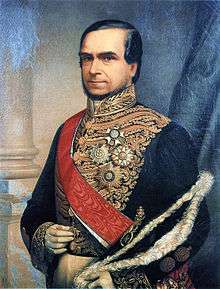

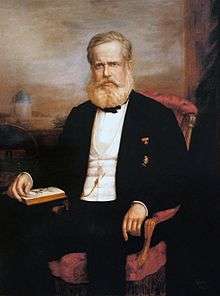 Pedro II of Brazil<ref>See:
Pedro II of Brazil<ref>See:








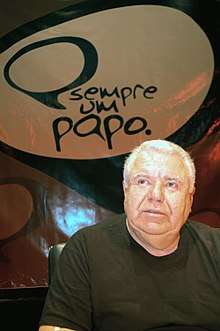
Demography
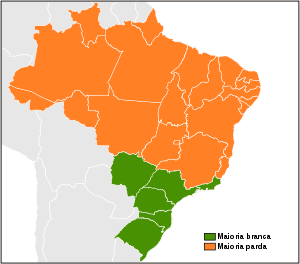
By state

The Brazilian states with the highest percentages of whites are the three located in the South of the country: Santa Catarina, Rio Grande do Sul and Paraná. These states, along with São Paulo, received an important influx of European immigrants in the period of the Great Immigration (1876–1914).
- Santa Catarina: 83,8%
- Rio Grande do Sul: 82,3%
- Paraná: 70,0%
- São Paulo: 60,6%
- Rio de Janeiro: 54,5%
- Mato Grosso do Sul: 54,5%
- Espírito Santo: 44,2%
- Minas Gerais: 45,4%
- Goiás: 37,2% [23]
The Brazilian states with the lowest percentages of whites are located in the North, where there is a strong Amerindian influence in the population's racial composition, and in part of the Northeast, notably in Bahia and Maranhão, where African influence is stronger.[246]
States with high absolute numbers:
- São Paulo: 30,976,877 Whites
- Minas Gerais: 9,019,164
- Rio Grande do Sul: 8,973,928
- Rio de Janeiro: 8,513,778
- Paraná: 7,620,982
- Santa Catarina: 5,297,900
- Pernambuco: 3,151,550
- Ceará: 2,883,000
- Bahia: 2,864,000
- Goiás: 2,618,000
- Espírito Santo: 1,835,000
- Mato Grosso: 1,179,000
- Mato Grosso do Sul: 1,157,000
The nation's capital, Brasília, in the Federal District has 1,084,418 white citizens.[248][24]
| Federative Units | White Population 1940(%)[249] | White Population 2009(%)[250] |
|---|---|---|
| Santa Catarina | 94,4% | 83,8% |
| Rio Grande do Sul | 88,7% | 82,3% |
| Paraná | 86,6% | 70,0% |
| São Paulo | 84,9% | 60,6% |
| Goiás | 72,1% | 37,2% |
| Rio de Janeiro (city) | 71,1%* (in the then Federal District*) | 55,0%* (in Metropolitan Region of Rio de Janeiro*) |
| Espírito Santo | 67,5% | 44,2% |
| Minas Gerais | 64,2% | 47,2% |
| Rio de Janeiro (state) | 63,8% | 54,5% |
| Alagoas | 56,7% | 26,8% |
| Pernambuco | 54,4% | 36,6% |
| Acre | 54,3% | 26,9% |
| Paraíba | 53,8% | 36,4% |
| Ceará | 52,6% | 31,0% |
| Mato Grosso | 50,8% | 38,9% |
| Maranhão | 46,8% | 23,9% |
| Sergipe | 46,7% | 28,8% |
| Piauí | 45,2% | 24,1% |
| Pará | 44,6% | 21,9% |
| Rio Grande do Norte | 43,5% | 36,3% |
| Amazonas | 31,2% | 20,9% |
| Bahia | 28,7% | 23,0% |
- Excludes states created after 1940.
Cities and towns
In a list of the 144 Brazilian towns with the highest percentages of whites, all the cities were located in two states: Rio Grande do Sul or Santa Catarina. All these towns are settled predominantly by Brazilians of German and Italian descent and are very small. It is important to note that in the late 19th century, many German and Italian immigrants created small communities across Southern Brazil. These communities were settled, in many cases, exclusivily by European immigrants and their descendants.[251] The Brazilian towns with the largest percentages of whites are the following:[252]
- Montauri (Rio Grande do Sul): 100% White (1,615 inhabitants)
- Leoberto Leal (Santa Catarina): 99.82% (3,348 inhabitants)
- Pedras Grandes (Santa Catarina): 99.81% (4,849 inhabitants)
- Capitão (Rio Grande do Sul): 99.77% (2,751 inhabitants)
- Santa Tereza (Rio Grande do Sul): 99.69% (1,604 inhabitants)
- Cunhataí (Santa Catarina): 99.67% (1,740 inhabitants)
- São Martinho (Santa Catarina): 99.64% (3,221 inhabitants)
- Guabiju (Rio Grande do Sul): 99.62% (1,775 inhabitants)
The Brazilian towns with the lowest percentages of whites are located in Northern and Northeastern Brazil and are also small.
- Nossa Senhora das Dores (Sergipe): 0.71% White (23,817 inhabitants, 98.16% "pardos")
- Santo Inácio do Piauí (Piauí): 2.25% (3,523 inhabitants, 96.90% "pardos")
- Uiramutã (Roraima): 2.33% (6,430 inhabitants, 74.41% Amerindian)
- Ipixuna (Amazonas): 2.35% (17,258 inhabitants, 80.46% "pardos")
- Caapiranga (Amazonas): 2.97% (9,996 inhabitants, 81.68% "pardos")
- Fonte Boa (Amazonas): 3.01% (37,595 inhabitants, 86.46% "pardos")
- Santa Isabel do Rio Negro (Amazonas): 3.15% (16,622 inhabitants, 59.62% "pardos", 34.75% Amerindian)
- Serrano do Maranhão (Maranhão): 3.30% (5,547 inhabitants, 69.08% "pardos", 24.97% Black)
Genetic research
The genes can reveal from what part of the world the oldest ancestors of the paternal and maternal line of a person came from. The mitochondrial DNA (mtDNA) is present in all human beings and passed down through the maternal line, i.e. the mother of a mother of a mother etc. The Y chromosome is present only in males and passed down through the paternal line, i.e., the father of a father of a father etc. The mitochondrial DNA and Y chromosome suffer only minor mutations through centuries, thus can be used to establish the paternal line in males (because only males have the Y chromosome) and the maternal line in both males and females.
According to a genetic study about Brazilians (based upon about 200 samples), on the paternal side, 98% of the white Brazilian Y Chromosome comes from a European male ancestor, only 2% from an African ancestor and there is a complete absence of Amerindian contributions. On the maternal side, 39% have European Mitochondrial DNA, 33% Amerindian and 28% African female ancestry. This, considering the facts that the slave trade was effectively suppressed in 1850, and that the Amerindian population had been reduced to small numbers even earlier, shows that at least 61% of white Brazilians had at least one ancestor living in Brazil before the beginning of the Great Immigration. This analysis, however, only shows a small fraction of a person's ancestry (the Y Chromosome comes from a single male ancestor and the mtDNA from a single female ancestor, while the contributions of the many other ancestors is not specified).[253]
According to another genetic research (based upon about 200 samples again) over 75% of caucasians from North, Northeast and Southeast Brazil would have over 10% Sub-Saharan African genes, and that this would also be the case with Southern Brazil for 49% of the caucasian population. According to this study, in all United States 11% of Caucasians have over 10% African genes. Thus, 86% of Brazilians would have at least 10% of genes that came from Africa. The researchers however were cautious about its conclusions: "Obviously these estimates were made by extrapolation of experimental results with relatively small samples and, therefore, their confidence limits are very ample". A new autosomal study from 2011, also led by Sérgio Pena, but with nearly 1000 samples this time, from all over the country, shows that in most Brazilian regions most Brazilians "whites" are less than 10% African in ancestry, and it also shows that the "pardos" are predominantly European in ancestry, the European ancestry being therefore the main component in the Brazilian population, in spite of a very high degree of African ancestry and significant Native American contribution.[254] Other autosomal studies (see some of them below) show a European predominance in the Brazilian population.
Another genetic research suggested that the white Brazilian population is not genetically homogenous, as its genomic ancestry varies in different regions. Samples of white males from Rio Grande do Sul have showed significant differences between whites of different localities of state. In a sample from the town of Veranópolis, heavily settled by people of Italian descent, the results from the maternal and paternal sides showed almost complete European ancestry. On the other hand, a sample of whites from several other regions of Rio Grande do Sul showed significant fractions of Native American (36%) and African (16%) mtDNA haplogroups.[255]
Another study (based on blood polymorphisms, from 1981) carried out in one thousand individuals from Porto Alegre city, Southern Brazil, and 760 from Natal city, Northeastern Brazil, found whites of Porto Alegre had 8% of African alleles and in Natal the ancestry of the samples total was characterized as 58% white, 25% black, and 17% Amerindian. This study found that persons identified as white or Pardo in Natal have similar ancestries, a dominant European ancestry, while persons identified as white in Porto Alegre have an overwhelming majority of European ancestry.[256]
According to an autosomal DNA genetic study from 2011, both "whites" and "pardos" from Fortaleza have a predominantly degree of European ancestry (>70%), with minor but important African and Native American contributions. "Whites" and "pardos" from Belém and Ilhéus also were found to be pred. European in ancestry, with minor Native American and African contributions.[254]
| Genomic ancestry of individuals in Porto Alegre Sérgio Pena et al. 2011.[254] | ||||
|---|---|---|---|---|
| colour | Amerindian | African | European | |
| white | 9.3% | 5.3% | 85.5% | |
| pardo | 11.4% | 44.4% | 44.2% | |
| black | 11% | 45.9% | 43.1% | |
| total | 9.6% | 12.7% | 77.7% | |
| Genomic ancestry of individuals in Fortaleza Sérgio Pena et al. 2011.[254] | ||||
| colour | Amerindian | African | European | |
| white | 10.9% | 13.3% | 75.8% | |
| pardo | 12.8% | 14.4% | 72.8% | |
| black | N.S. | N.S. | N.S | |
| Genomic ancestry of non-related individuals in Rio de Janeiro Sérgio Pena et al. 2009[51] | ||||
| Cor | Number of individuals | Amerindian | African | European |
| White | 107 | 6.7% | 6.9% | 86.4% |
| "parda" | 119 | 8.3% | 23.6% | 68.1% |
| "preta" | 109 | 7.3% | 50.9% | 41.8% |
According to another study, autosomal DNA study (see table), those who identified as whites in Rio de Janeiro turned out to have 86.4% – and self identified pardos 68.1% – European ancestry on average. Blacks were found out to have on average 41.8% European ancestry.[51]
According to another study (from 1965, and based on blood groups and electrophoretic markers) carried out on whites of Northeastern Brazilian origin living in São Paulo the ancestries would be 70% European, 18% African and 12% Amerindian admixture.[257]
Another study (autosomal DNA study, from 2010) found out that European ancestry predominates in the Brazilian population as a whole ("whites", "pardos" and "blacks" altogether). European ancestry is dominant throughout Brazil at nearly 80%, except for the Southern part of Brazil, where the European heritage reaches 90%. "A new portrayal of each ethnicity contribution to the DNA of Brazilians, obtained with samples from the five regions of the country, has indicated that, on average, European ancestors are responsible for nearly 80% of the genetic heritage of the population. The variation between the regions is small, with the possible exception of the South, where the European contribution reaches nearly 90%. The results, published by the scientific magazine 'American Journal of Human Biology' by a team of the Catholic University of Brasília, show that, in Brazil, physical indicators such as skin colour, colour of the eyes and colour of the hair have little to do with the genetic ancestry of each person, which has been shown in previous studies"(regardless of census classification).[258] "Ancestry informative SNPs can be useful to estimate individual and population biogeographical ancestry. Brazilian population is characterized by a genetic background of three parental populations (European, African, and Brazilian Native Amerindians) with a wide degree and diverse patterns of admixture. In this work we analyzed the information content of 28 ancestry-informative SNPs into multiplexed panels using three parental population sources (African, Amerindian, and European) to infer the genetic admixture in an urban sample of the five Brazilian geopolitical regions. The SNPs assigned apart the parental populations from each other and thus can be applied for ancestry estimation in a three hybrid admixed population. Data was used to infer genetic ancestry in Brazilians with an admixture model. Pairwise estimates of F (st) among the five Brazilian geopolitical regions suggested little genetic differentiation only between the South and the remaining regions. Estimates of ancestry results are consistent with the heterogeneous genetic profile of Brazilian population, with a major contribution of European ancestry (0.771) followed by African (0.143) and Amerindian contributions (0.085). The described multiplexed SNP panels can be useful tool for bioanthropological studies but it can be mainly valuable to control for spurious results in genetic association studies in admixed populations."[259] It is important to note that "the samples came from free of charge paternity test takers, thus as the researchers made it explicit: "the paternity tests were free of charge, the population samples involved people of variable socioeconomic strata, although likely to be leaning slightly towards the ‘‘pardo’’ group".[260] According to it the total European, African and Native American contributions to the Brazilian population are:
| Region[260] | European | African | Native American |
|---|---|---|---|
| North Region | 71,10% | 18,20% | 10,70% |
| Northeast Region | 77,40% | 13,60% | 8,90% |
| Central-West Region | 65,90% | 18,70% | 11,80% |
| Southeast Region | 79,90% | 14,10% | 6,10% |
| South Region | 87,70% | 7,70% | 5,20% |
In support of the dominant European heritage of Brazil, according to another autosomal DNA study (from 2009) conducted on a school in the poor periphery of Rio de Janeiro the "pardos" there were found to be on average over 80% European, and the "whites" (who thought of themselves as "very mixed") were found out to carry very little Amerindian or African admixtures. "The results of the tests of genomic ancestry are quite different from the self made estimates of European ancestry", say the researchers. In general, the test results showed that European ancestry is far more important than the students thought it would be. The "pardos" for example thought of themselves as ⅓ European, ⅓ African and ⅓ Amerindian before the tests, and yet their ancestry was determined to be at over 80% European. The "blacks" (pretos) of the periphery of Rio de Janeiro, according to this study, thought of themselves as predominantly African before the study and yet they turned out predominantly European (at 52%), the African contribution at 41% and the Native American 7%.[28][29][261]
An autosomal study from 2013, with nearly 1300 samples from all of the Brazilian regions, found a pred. degree of European ancestry combined with African and Native American contributions, in varying degrees. 'Following an increasing North to South gradient, European ancestry was the most prevalent in all urban populations (with values up to 74%). The populations in the North consisted of a significant proportion of Native American ancestry that was about two times higher than the African contribution. Conversely, in the Northeast, Center-West and Southeast, African ancestry was the second most prevalent. At an intrapopulation level, all urban populations were highly admixed, and most of the variation in ancestry proportions was observed between individuals within each population rather than among population'.[262]
| Region[263] | European | African | Native American |
|---|---|---|---|
| North Region | 51% | 17% | 32% |
| Northeast Region | 56% | 28% | 16% |
| Central-West Region | 58% | 26% | 16% |
| Southeast Region | 61% | 27% | 12% |
| South Region | 74% | 15% | 11% |
According to another autosomal DNA study from 2009, the Brazilian population, in all regions of the country, was also found out to be predominantly European: "all the Brazilian samples (regions) lie more closely to the European group than to the African populations or to the Mestizos from Mexico".[264] According to it the total European, African and Native American contributions to the Brazilian population are:
| Region[265] | European | African | Native American |
|---|---|---|---|
| North Region | 60,6% | 21,3% | 18,1% |
| Northeast Region | 66,7% | 23,3% | 10,0% |
| Central-West Region | 66,3% | 21,7% | 12,0% |
| Southeast Region | 60,7% | 32,0% | 7,3% |
| South Region | 81,5% | 9,3% | 9,2% |
According to another autosomal study from 2008, by the University of Brasília (UnB), European ancestry dominates in the whole of Brazil (in all regions), accounting for 65,90% of heritage of the population, followed by the African contribution (24,80%) and the Native American (9,3%).[266]
An autosomal study from 2011 (with nearly almost 1000 samples from all over the country, "whites", "pardos" and "blacks" included, according to their respective proportions) has also concluded that European ancestry is the predominant ancestry in Brazil, accounting for nearly 70% of the ancestry of the population: "In all regions studied, the European ancestry was predominant, with proportions ranging from 60.6% in the Northeast to 77.7% in the South".[254] The 2011 autosomal study samples came from blood donors (the lowest classes constitute the great majority of blood donors in Brazil[267]), and also public health institutions personnel and health students. In all Brazilian regions European, African and Amerindian genetic markers are found in the local populations, even though the proportion of each varies from region to region and from individual to individual.[268][269] However most regions showed basically the same structure, a greater European contribution to the population, followed by African and Native American contributions: "Some people had the vision Brazil was a heterogeneous mosaic [...] Our study proves Brazil is a lot more integrated than some expected".[270] Brazilian homogeneity is, therefore, greater within regions than between them:
| Region[29] | European | African | Native American |
|---|---|---|---|
| Northern Brazil | 68,80% | 10,50% | 18,50% |
| Northeast of Brazil | 60,10% | 29,30% | 8,90% |
| Southeast Brazil | 74,20% | 17,30% | 7,30% |
| Southern Brazil | 79,50% | 10,30% | 9,40% |
A 2015 autosomal genetic study, which also analysed data of 25 studies of 38 different Brazilian populations concluded that: European ancestry accounts for 62% of the heritage of the population, followed by the African (21%) and the Native American (17%). The European contribution is highest in Southern Brazil (77%), the African highest in Northeast Brazil (27%) and the Native American is the highest in Northern Brazil (32%).[271]
| Region[271] | European | African | Native American |
|---|---|---|---|
| North Region | 51% | 16% | 32% |
| Northeast Region | 58% | 27% | 15% |
| Central-West Region | 64% | 24% | 12% |
| Southeast Region | 67% | 23% | 10% |
| South Region | 77% | 12% | 11% |
According to an autosomal DNA study (from 2003) focused on the composition of the Brazilian population as a whole, "European contribution [...] is highest in the South (81% to 82%), and lowest in the North (68% to 71%). The African component is lowest in the South (11%), while the highest values are found in the Southeast (18–20%). Extreme values for the Amerindian fraction were found in the South and Southeast (7%-8%) and North (17%-18%)". The researchers were cautious with the results as their samples came from paternity test takers which may have skewed the results partly.[272][273]
São Paulo state, the most populous state in Brazil, with about 40 million people, showed the following composition, according to an autosomal study from 2006: European genes account for 79% of the heritage of the people of São Paulo, 14% are of African origin, and 7% Native American.[274] A more recent study, from 2013, found the following composition in São Paulo state: 61,9% European, 25,5% African and 11,6% Native American.[275]
Several other older studies have suggested that European ancestry is the main component in all Brazilian regions. A study from 1965, Methods of Analysis of a Hybrid Population (Human Biology, vol 37, number 1), led by the geneticists D. F. Roberts e R. W. Hiorns, found out the average the Northeastern Brazilian to be predominantly European in ancestry (65%), with minor but important African and Native American contributions (25% and 9%).[276] A study from 2002 quoted previous and older studies,[277][278][279][280] saying that: "Salzano (28, a study from 1997) calculated for the Northeastern population as a whole, 51% European, 36% African, and 13% Amerindian ancestries whereas in the north, Santos and Guerreiro (29, a study from 1995) obtained 47% European, 12% African, and 41% Amerindian descent, and in the southernmost state of Rio Grande do Sul, Dornelles et al. (30, a study from 1999) calculated 82% European, 7% African, and 11% Amerindian ancestries. Krieger et al. (31, a study from 1965) studied a population of Brazilian northeastern origin living in São Paulo with blood groups and electrophoretic markers and showed that whites presented 18% of African and 12% of Amerindian genetic contribution and that blacks presented 28% of European and 5% of Amerindian genetic contribution (31). Of course, all of these Amerindian admixture estimates are subject to the caveat mentioned in the previous paragraph. At any rate, compared with these previous studies, our estimates showed higher levels of bidirectional admixture between Africans and non-Africans."[257]
See also
- British Latin American
- Dutch Brazilians
- Emigration from Europe
- English Brazilians
- European diaspora
- European immigration to Brazil
- Finnish Brazilians
- German Brazilians
- History of the Jews in Brazil
- Hungarian Brazilians
- Immigration to Brazil
- Italian Brazilians
- Japanese Brazilians
- Lithuanian Brazilians
- Luxembourg Brazilians
- Polish Brazilians
- Portuguese Brazilians
- Russians in Brazil
- Scandinavian Brazilians
- Scottish Brazilians
- Ukrainian Brazilians
- Western culture
- Western world
- White Argentines
- White Latin Americans
- White people
References
- 1 2 3 4 5 "Censo Demográfi co 2010 Características da população e dos domicílios Resultados do universo" (PDF). 8 November 2011. Retrieved 2014-07-12.
- ↑ "Hunsrückish". Ethnologue. Retrieved 20 July 2015.
- ↑ "Standard German". Ethnologue. Retrieved 20 July 2015.
- 1 2 "Olivet Second Most Spoken Languages Around the World". Olivet.edu. Retrieved 29 March 2016.
- ↑ "Veneto". Ethnologue. Retrieved 29 March 2016.
- ↑ "Venetian or Talian". Ethnologue. Retrieved 21 July 2015.
- 1 2 Costa, Luciane Trennephol da; Gielinski, Márcia Inês (17 August 2014). "DETALHES FONÉTICOS DO POLONÊS FALADO EM MALLET". Revista (Con)textos Linguísticos. 8 (10): 159–174 – via periodicos.ufes.br.
- 1 2 Delong, Silvia Regina; Kersch, Dorotea Frank (17 September 2014). "Perfil de descendentes de poloneses residentes no sul do Brasil: a constituição da(s) identidade(s)". Domínios de Lingu@gem. 8 (3): 65–85. doi:10.14393/DLesp-v8n3a2014-5 – via www.seer.ufu.br.
- 1 2 3 4 5 6 7 8 "O PANORAMA LINGÜÍSTICO BRASILEIRO : A COEXISTÊNCIA DE LÍNGUAS MINORITÁRIAS COM O PORTUGUÊS". Revistas.usp.br. Retrieved 2017-08-21.
- ↑ "Ukrainian". Ethnologue.com. Retrieved 2017-08-19.
- ↑ "Dutch in Brazil". Ethnologue. Retrieved 29 March 2016.
- 1 2 Ina Emmel (2005). ""Die kann nun nich’, die is’ beim treppenputzen!" O PROGRESSIVO NO ALEMÃO DE POMERODE–SC" (PDF). UNIVERSIDADE FEDERAL DE SANTA CATARINA.
- 1 2 Göz Kaufmann (2004). "Eine Gruppe - Zwei Geschichten - Drei Sprachen. Rußlanddeutsche Mennoniten in Brasilien und Paraguay". Zeitschrift für Dialektologie und Linguistik. Franz Steiner Verlag: 257–306. JSTOR 40505042.
- 1 2 "Mennoniten - junge gemeinde - Mennoniten in Lateinamerika / Paraguay / Brasilien / Bolivien / Mexiko / Südamerika". Jungegemeinde.de. 2007-03-18. Retrieved 2015-08-11.
- 1 2 3 René Laglstorfer. "Schuhplattln auf Brasilianisch". derStandard.at. Retrieved 4 August 2015.
- 1 2 "Brazil Brown Bag Seminar Series – Lithuanian Diaspora in the Americas by Erick Reis Godliauskas Zen. Organizer: Lemann Center for Brazilian Studies". Ilas.columbia.edu. Archived from the original on 15 April 2016. Retrieved 21 April 2016.
- ↑ "Imigração Russa no Brasil por Viktor Voronov". Br.sputniknews.com. 5 November 2009. Archived from the original on 2 June 2016. Retrieved 5 May 2016.
- ↑ "E o terceiro fluxo, entre 1949 e 1965, quando chegaram ao Brasil aproximadamente 25 mil russos refugiados da revolução cultural chinesa". Noticias.terra.com.br. 2015-06-13. Retrieved 2016-05-05.
- 1 2 "Fundação Cultural Suábio-Brasileira". SDuabios.com.br. Retrieved 4 August 2015.
- ↑ "Yiddish, Western". Ethnologue.com. Retrieved 19 August 2017.
- ↑ "German speakers immigrated mainly from Germany, but also from Switzerland, Austria, Luxembourg and Russia". Retrieved 2016-04-10.
- ↑ "População de Goiás - Geografia". InfoEscola (in Portuguese). Retrieved 2018-08-16.
- 1 2 "Dados do Censo". Brasilescola.uol. Retrieved 29 March 2016.
- 1 2 "Censo Brasil 2010". Noticias.uol.com.br. Retrieved 29 March 2016.
- ↑ Michael Hanchard, editor's "Introduction" to Racial Politics in Contemporary Brazil (Durham, N.C.: Duke University Press, 1999; ISBN 0-8223-2272-2).
- 1 2 "Brazilian Journal of Medical and Biological Research - DNA tests probe the genomic ancestry of Brazilians". Scielo.br. Retrieved 2014-01-23.
- ↑ "BBC World Service - News - Black in Brazil: a question of identity". Bbc.co.uk. 2009-11-03. Retrieved 2014-01-23.
- 1 2 "Negros e pardos do Rio têm mais genes europeus do que imaginam, segundo estudo". Meionews.com.br. Archived from the original on 6 July 2011. Retrieved 2014-01-23.
- 1 2 3 "502 Bad Gateway" (PDF). 30 December 2016. Retrieved 19 August 2017.
- ↑ Ronald M. Glassman; William H. Swatos & Barbara J. Denison (2004). Social Problems in Global Perspective. University Press of America. Lanham, Maryland. ISBN 0-7618-2933-4. Retrieved 2009-12-13.
- ↑ Carvalho-Silva, Denise R.; et al. (2001). "The Phylogeography of Brazilian Y-Chromosome Lineages". American Journal of Human Genetics. 68 (1): 281–286. doi:10.1086/316931. PMC 1234928. PMID 11090340.
- ↑ "Over 15% of the population in Latin America today can trace back their ancestry to Iberian and other European nobles". g1.globo.com. 2016-08-06. Retrieved 2017-08-19.
- ↑ Parra (January 2003). "Color and genomic ancestry in Brazilians". Proceedings of the National Academy of Sciences. 100 (1): 177–82. doi:10.1073/pnas.0126614100. PMC 140919. PMID 12509516. Second paragraph
- 1 2 Tom Phillips in Rio de Janeiro. "Brazil census shows African-Brazilians and Mestizos in the majority for the first time | World news". The Guardian. Retrieved 2014-01-23.
- ↑ "Brazil welcomes drop in population growth". nytimes.com. 1992-03-08. Retrieved 2014-01-24.
- ↑ "Fertility rate plummets in Brazil". Washingtonpost.com. 2011-12-29. Retrieved 2014-01-24.
- ↑ Environmental Justice and Sustainable Development. With a case study in Brazil's Amazon using Q Methodology. Götz Kaufmann. p. 204 – via Google Books.
- ↑ "Tabela 7 - População residente, por cor ou raça, segundo as Grandes Regiões e as Unidades da Federação - 2000" (PDF). Archived from the original (PDF) on 2007-12-16.
- ↑ "Tabela 1.3.1 - População residente, por cor ou raça, segundo o sexo e os grupos de idade" (PDF). 2010.
- ↑ Tereza Cristina N. Araújo. A classificação de "cor" nas pesquisas do IBGE.. In Cadernos de Pesquisa 63, November 1987. p. 14.
- 1 2 Tereza Cristina N. Araújo. A classificação de "cor" nas pesquisas do IBGE. In Cadernos de Pesquisa 63, November 1987. p. 14.
- ↑ Diretoria Geral de Estatística. Sexo, raça e estado civil, nacionalidade, filiação culto e analphabetismo da população recenseada em 31 de dezembro de 1890. p. 5.
- ↑ IBGE. Censo Demográfico 1940. p. xxi.
- ↑ IBGE. Censo Demográfico. p. XVIII
- ↑ IBGE. Censo Demográfico de 1960. Série Nacional, Vol. I, p. XIII
- 1 2 3 4 5 6 7 8 9 10 11 Edward Eric Telles (2004), "Racial Classification", Race in Another America: the significance of skin color in Brazil, Princeton University Press, pp. 81–84, ISBN 0-691-11866-3
- ↑ "Aurélio dictionary definition for "moreno"". Dicionariodoaurelio.com. Retrieved 2014-01-23.
- ↑ "Questões Negras". Web.archive.org. 9 September 2009. Archived from the original on 9 September 2009. Retrieved 19 August 2017.
- ↑ "Aurélio dictionary definition of Moreno". Dicionariodoaurelio.com. Retrieved 2014-01-23.
- ↑ Luisa Farah Schwartzman (2007-12-01). "Does Money Whiten? Intergenerational Changes in Racial Classification in Brazil". Asr.sagepub.com. Retrieved 2014-01-23.
- 1 2 3 Sergio Danilo Pena (17 November 2009). "Do pensamento racial ao pensamento racional" (PDF). Archived from the original (PDF) on 22 May 2014. Retrieved 2014-07-12.
- ↑ "Miscigenação não leva à democracia racial, diz sociólogo". Bbc.co.uk. Retrieved 2014-01-23.
- 1 2 3 "IBGE teen". Web.archive.org. 24 February 2013. Archived from the original on 24 February 2013. Retrieved 19 August 2017.
- ↑ History of Immigration to the United States#Population in 1790
- ↑ Florentino, Manolo, and Machado, Cacilda. Ensaio sobre a imigração portuguesa e os padrões de miscigenação no Brasil (séculos XIX e XX) - 2002 - Portugueses, (PDF file)
- 1 2 3 Telfer (1932), p. 184.
- 1 2 Bethell (1984), p. 47.
- 1 2 3 "Desmundo de Alain Fresnot, o Brasil no século XVI". Ensinarhistoriajoelza.com.br. Retrieved 22 April 2016.
- 1 2 "Desmundo by Ana Miranda (1996)". Companhiadasletras.com.br. Retrieved 22 April 2016.
- ↑ Paul Louis Jacques Gaffarel, Histoire du Brésil français au seizième siècle (Paris: Maison Neuve, 1878).
- 1 2 Johannes Menne Postma (1990). The Dutch in the Atlantic slave trade, 1600–1815. Cambridge: Cambridge University Press. pp. 18–20. ISBN 0-521-36585-6.
- ↑ Beth Capelache de Carvalho. "Histórias e lendas de santos: os imigrantes: A colônia judaica (1)", A Tribuna de Santos, 27 June 1982". Retrieved 2009-05-25.
- 1 2 3 4 5 6 "Brazil Virtual Jewish History Tour". Jewishvirtuallibrary.org.
- 1 2 3 4 "Recife, Brazil". Jewishvirtuallibrary.org.
- 1 2 3 "The Dutch colonialism in Brazil". Colonialvoyage.com. Retrieved 2016-05-04.
- ↑ "Nordestinos anusim de ascendência judaica podem tornar-se cidadãos israelenses". Matéria jornalística em Diário do Nordeste, Fortaleza CE. 2005-10-13. Retrieved 2016-05-04.
- ↑ Flávia de Ávila (2003). "Entrada de Trabalhadores Estrangeiros no Brasil: Evolução Legislativa e Políticas Subjacentes nos Séculos XIX e XX. PhD thesis" (PDF). Florianópolis: Universidade Federal de Santa Catarina. pp. 31–32. [1.21MB PDF file] Ávila cites Manuel Diégues Júnior, Imigração, urbanização e industrialização: Estudo sobre alguns aspectos da contribuição cultural do imigrante no Brasil (Brasília: MEC, 1964), p. 18.
- ↑ "O DNA dos Pampas". Revistapesquisa.fapesp.br. Retrieved 2014-01-23.
- ↑ "História genética dos gaúchos : dinâmica populacional do sul do Brasil". Lume.ufrgs.br. Retrieved 2014-07-11.
- ↑ RIBEIRO, Darcy. O Povo Brasileiro, Companhia de Bolso, fourth reprint, 2008 (2008).
- ↑ Carvalho-Silva, DR; Santos, FR; Rocha, J; Pena, SD (January 2001). "The Phylogeography of Brazilian Y-Chromosome Lineages". Am. J. Hum. Genet. 68: 281–6. doi:10.1086/316931. PMC 1234928. PMID 11090340.
- ↑ "A Colônia Suíça de Nova Friburgo". Multirio.rj.gov.br. Retrieved 19 August 2017.
- ↑ "imigracao II". Mluther.org.br. Retrieved 2014-01-23.
- ↑ "Imigração no Brasil". Web.archive.org. 16 December 2007. Archived from the original on 16 December 2007. Retrieved 19 August 2017.
- ↑ "Especiais - Agência Brasil". Web.archive.org. 13 January 2009. Archived from the original on 13 January 2009. Retrieved 19 August 2017.
- 1 2 Judicael Clevelario Júnior (21 July 2003). "A participação da imigração na formação da população brasileira" (PDF). Archived from the original (PDF) on 22 June 2013. Retrieved 12 July 2014.
- ↑ Mortara, Giorgio. O aumento da população do Brasil entre 1872 e 1940.
- ↑ "p.52" (PDF). Archived from the original (PDF) on 22 June 2013. Retrieved 23 January 2014.
- ↑ "p.57" (PDF). Archived from the original (PDF) on 22 June 2013. Retrieved 23 January 2014.
- ↑ "Table 5, p.59; Table 6, p.60" (PDF). Archived from the original (PDF) on 22 June 2013. Retrieved 23 January 2014.
- ↑ "Abstract, p. 71" (PDF). Archived from the original (PDF) on 22 June 2013. Retrieved 23 January 2014.
- 1 2 "Wayback Machine" (PDF). Web.archive.org. 10 July 2012. Archived from the original (PDF) on 10 July 2012. Retrieved 19 August 2017.
- ↑ "DNA tests probe the genomic ancestry of Brazilians". Scielo.br. Retrieved 2014-01-23.
- ↑ ILARI, Rodolgo, BASSO, Renato. O Português da Gente. Editora Contexto (2006)
- ↑ "Folha Online - Ciência - DNA de brasileiro é 80% europeu, indica estudo - 05/10/2009". Folha.uol.com.br. Retrieved 2014-01-23.
- ↑ "Desmundo by Ana Miranda". Companhiadasletras.com.br. Retrieved 22 April 2016.
- ↑ "O povo brasileiro 3". Colegiosaofrancisco.com.br. Archived from the original on 28 July 2012. Retrieved 23 January 2014.
- ↑ "Paraguay". travel.nationalgeographic.com. Retrieved 19 August 2017.
- ↑ San Alberto Journal: Awful Lot of Brazilians in Paraguay, Locals Say. The New York Times. 12 June 2001.
- ↑ Senado de la Nación Argentina, Constitución de la Nación Argentina Archived 12 April 2013 at the Wayback Machine. Art. 25
El Gobierno federal fomentará la inmigración europea; y no podrá restringir, limitar ni gravar con impuesto alguno la entrada en el territorio argentino de los extranjeros que traigan por objeto labrar la tierra, mejorar las industrias, e introducir y enseñar las ciencias y las artes
- ↑ Darcy Ribeiro. O Povo Brasileiro, edition 07, 1997 (1997).
- ↑ John Manuel Monteiro, Negros da Terra
- ↑ Samuel L. Baily; Eduardo José Míguez (2003). Mass Migration to Modern Latin America. Rowman & Littlefield. p. xiv. ISBN 978-0-8420-2831-8. Retrieved 20 December 2015.
- 1 2 "Províncias de origem dos imigrantes italianos". ibge. Retrieved 2016-04-11.
- ↑ Marília D. Klaumann Cánovas (2004). "A GRANDE IMIGRAÇÃO EUROPÉIA PARA O BRASIL E O IMIGRANTE ESPANHOL NO CENÁRIO DA CAFEICULTURA PAULISTA: ASPECTOS DE UMA (IN)VISIBILIDADE" [The great European immigration to Brazil and immigrants within the Spanish scenario of the Paulista coffee plantations: one of the issues (in) visibility] (PDF). Cchla.ufpb.br (in Portuguese). Archived from the original (PDF) on 3 October 2009.
- 1 2 3 4 5 6 7 "Principais levas de imigração para o Brasil". Abril. Retrieved 6 April 2016.
- 1 2 3 "Research Professor, A.C. Van Raalte Institute, Hope College, Holland, Michigan, USA". Twelfth International Economic History Conference, Madrid, Spain, August 28, 1998 (Session C-31). Retrieved 2016-05-04.
- 1 2 "Brazil - Modern-Day Community". Jewishvirtuallibrary.org/. 2013. Retrieved 2013-12-22.
- 1 2 3 4 "Entrada de estrangeiros no Brasil". Retrieved 2014-01-23.
- 1 2 3 4 5 "Regiões de destino dos imigrantes italianos". ibge. Retrieved 2016-04-11.
- 1 2 "Embaixada da Hungria no Brasil sobre as estatísticas de descendentes de húngaros". Mfa.gov.hu. Archived from the original on 12 November 2016. Retrieved 4 May 2016.
- 1 2 Cheflaszlo. "The Situtation of Hungarians Living outside the Carpathian Basin, by Cheflaszlo". Cheflaszlo.com. Archived from the original on 17 April 2008. Retrieved 4 May 2016.
- ↑ "Judeus no Brasil. Vida social, política e cultural". ibge. Retrieved 2016-04-11.
- 1 2 3 4 5 6 7 "Um atalho para a Europa". Epoca. Editora Globo S.A. 24 June 2002. Archived from the original on 21 August 2012.
- 1 2 3 4 5 6 7 Wojciech Tyciński, Krzysztof Sawicki, Departament Współpracy z Polonią MSZ (2009). "Raport o sytuacji Polonii i Polaków za granicą (The official report on the situation of Poles and Polonia abroad)" (PDF). Warsaw: Ministerstwo Spraw Zagranicznych (Ministry of Foreign Affairs of Poland). pp. 1&ndash, 466. Archived from the original (PDF file, direct download 1.44 MB) on July 21, 2012. Retrieved June 14, 2013.
- ↑ Marília D. Klaumann Cánovas (2004). "A GRANDE IMIGRAÇÃO EUROPÉIA PARA O BRASIL E O IMIGRANTE ESPANHOL NO CENÁRIO DA CAFEICULTURA PAULISTA: ASPECTOS DE UMA (IN)VISIBILIDADE" [The great European immigration to Brazil and immigrants within the Spanish scenario of the Paulista coffee plantations: one of the issues (in) visibility] (PDF). Cchla.ufpb.br (in Portuguese). Archived from the original (PDF) on 3 October 2009.
- 1 2 "A Presença Britânica e a Língua Inglesa na Corte de D. João. Escrito por Joselita Júnia Viegas Vidotti (USP)". USP. ISSN 1981-6677. Retrieved 11 April 2016.
- 1 2 "Ingleses no Brasil: aspectos da influência britânica sobre a vida, a paisagem e a cultura do Brasil". Gilberto Freyre Editora Topbook. Retrieved 10 April 2016.
- 1 2 "Brits in Brazil". Dailymail. Retrieved 7 August 2014.
- 1 2 "Brazil - International Religious Freedom Report 2009". State.gov/. 2009-10-26. Retrieved 2013-12-22.
- ↑ "Regiões de origem e de destino dos imigrantes teutônicos". ibge. Retrieved 2016-04-11.
- 1 2 3 4 "Os imigrantes teutônicos no Brasil- alemães, austríacos, luxemburgueses, pomeranos e volga". ibge. Retrieved 2016-04-11.
- ↑ "Origem e destino dos imigrantes". ibge. Retrieved 2016-04-11.
- 1 2 3 "Regiões de origem e de destino dos imigrantes teutônicos". ibge. Retrieved 2016-04-11.
- ↑ Altenhofen, Cléo Vilson: Hunsrückisch in Rio Grande do Sul, Franz Steiner Verlag, Stuttgart 1996, p. 24.
- 1 2 "Federação Israelita do Rio Grande do Sul". Firgs.org.br. 2009. Archived from the original on 28 May 2009. Retrieved 25 December 2013.
- 1 2 3 4 "Paraná State Government page". Cidadao.pr.gov.br. Retrieved 2014-01-23.
- 1 2 3 "Restauração da igreja ortodoxa de Mallet - Marco da valorização da presença eslava no Sul do Brasil". Vanhoni.com. Retrieved 29 May 2016.
- 1 2 "Inaugurado o restauro da igreja ortodoxa de São Miguel Arcanjo em Mallet - Marco da imigração ucraniana no Brasil". Representação Central Ucraniano-Brasileira. Retrieved 29 May 2016.
- ↑ "Katharinensisch". Universal_lexikon.deacademic. Retrieved November 8, 2016.
- ↑ "Joinville e Orleans, imigração para Santa Catarina". IBGE. Retrieved 6 April 2016.
- ↑ "Base de dados de emigrantes açorianos para o Brasil nos séculos XVIII e XIX". Observatório da Emigração. Archived from the original on 21 September 2013. Retrieved 7 April 2016.
- ↑ "Archived copy". Archived from the original on 19 August 2008. Retrieved 9 October 2008.
- ↑
- ↑
- ↑ "Archived copy". Archived from the original on 2 November 2008. Retrieved 13 October 2008.
- ↑ ":: Site Oficial de Dom Feliciano ::". Web.archive.org. 6 July 2011. Archived from the original on 6 July 2011. Retrieved 19 August 2017.
- ↑ Tanya Katerí Hernández (2013). "Brazilian "Jim Crow": The Immigration Law Whitening Project and the Customary Law of Racial Segregation — A Case Study". Racial subordination in Latin America (1st ed.). Cambridge University Press. pp. 50–51. ISBN 978-1-107-02486-1. Retrieved 21 September 2014.
- 1 2 Maria Stella Ferreira Levy. O Papel da Migração Internacional na Evolução da População Brasileira. Table 1, p. 73
- ↑ "A Integração social e económica dos emigrantes portugueses no Brasil" (PDF). Archived from the original (PDF) on 30 December 2016. Retrieved 25 August 2014.
- ↑ "Retrato Molecular- Genética". Ich.unito.com.br. Retrieved 2017-08-19.
- ↑ Do outro lado do Atlântico: um século de imigração italiana no Brasil. Retrieved 2014-08-25.
- ↑ "A integração social e económica dos imigrantes portugueses no Brasil nos finais do século xix e no século xx" (PDF). Retrieved 2014-08-25.
- ↑ "Estudo descobre 31 milhões de portugueses pelo mundo". Dn.pt. Retrieved 7 April 2016.
- ↑ "Archived copy". Archived from the original on 3 March 2016. Retrieved 28 April 2016.
- ↑ "Só o Brasil concedeu mais de 52 mil vistos de residência nos primeiros 6 meses". Graciano Coutinho OPovo. Archived from the original on 19 August 2017. Retrieved 7 April 2016.
- ↑ "Imigração aumenta 50 por cento em seis meses". Brasil.gov.br. Retrieved 7 April 2016.
- ↑ "Maria Stella Ferreira Levy. O Papel da Migração Internacional na Evolução da População Brasileira. Table 1, p. 73" (PDF). Retrieved 2014-01-23.
- ↑ "Wayback Machine" (PDF). Web.archive.org. 20 March 2009. Retrieved 11 January 2018.
- ↑ "TICON - TICOM - Breve História da Imigração Italiana". Familias CECCON. 2006-06-23. Retrieved 2014-01-23.
- ↑ Venetian at Ethnologue (16th ed., 2009)
- ↑ "São Paulo capital, uma cidade italiana e os misteres profissionais dos imigrantes italianos". ibge. Retrieved 2016-04-11.
- 1 2 3 FAUSTO, Boris. Fazer a América: a imigração em massa para a América Latina.
- ↑ "Congresso Brasileiro de Hispanistas - Os periodicos dos imigrantes espanhois". Proceedings.scielo.br.
- ↑ "Brazil". Ethnologue.com. Retrieved 11 January 2018.
- ↑ "Hunsrik". Ethnologue.com. Retrieved 11 January 2018.
- ↑ "Os imigrantes alemães e seus descendentes no Brasil : a língua como fator identitário e inclusivo". Lume.ufrgs.br. Retrieved 2017-08-21.
- ↑ Altenhofen, Cléo Vilson: Hunsrückisch in Rio Grande do Sul, Franz Steiner Verlag, Stuttgart 1996
- 1 2 Ferreira Levy, Maria Stella. O Papel da Migração Internacional na Evolução da População Brasileira. Table 1, p. 71-3, and Table 2, p. 74
Até 1876 entraram 350,117 immigrantes, dos quais 45.73% foram portugueses, 35.74 de "outras nacionalidades"; alemães somam 12.97%, e italianos e espanhóis juntos não chegam a 6%.
(45,410 Germans from 1824 to 1876, and another 215,054 Germans from 1877 to 1972)— Page 53 - ↑ Ferreira Levy, Maria Stella. O Papel da Migração Internacional na Evolução da População Brasileira. Table 4, p. 79. Note: The then Federal District was annexed by the state of Rio de Janeiro.
- ↑ Ferreira Levy, Maria Stella. O Papel da Migração Internacional na Evolução da População Brasileira. pp. 58, 79
Santa Catarina, tem como grupo nacional mais importante os alemães cujas proporções oscilam ao redor de 40%, seguidos pelos italianos, com aproximadamente 17%, até o censo de 1950. Em 1970, a proporção de imigrantes italianos reduz-se a metade. As outras nacionalidades que tem expressão são poloneses, russos e austríacos com proporções entre 6 e 11%, considerando-se inclusive o censo de 1970.
— Page 58 - ↑ "Top 10 Oktoberfest's around the world". Skyscanner. 2011-09-19. Retrieved 2013-09-05.
- ↑ "Sistema Legis". Al.rs.gov.br.
- ↑ "Texto da Norma". Al.rs.gov.br.
- ↑ "Wayback Machine". 25 February 2009. Retrieved 19 August 2017.
- ↑ Sanglard, Gisele (1 April 2003). "From Nova Friburgo to Fribourg in writing: Swiss colonization seen by the immigrants". História, Ciências, Saúde-Manguinhos. 10 (1): 173–202. doi:10.1590/S0104-59702003000100006 – via SciELO.
- ↑ "De L'Etat à la nation 1839-1989" Imprimeries St. Paul p. 145
- ↑ "Regiões de origem dos imigrantes falantes de dialetos alemães". IBGE. Retrieved 6 April 2016.
- ↑ "Restauração da igreja ortodoxa de estilo ucraniano de Mallet - Marco da valorização da presença eslava no Sul do Brasil". Vanhoni.com. Retrieved 29 May 2016.
- ↑ "Imigração Holandesa no Brasil. Glossário. História, Sociedade e Educação no Brasil - HISTEDBR - Faculdade de Educação - UNICAMP". Histedbr.fae.unicamp.br. Archived from the original on 6 August 2013. Retrieved 23 January 2014.
- ↑ "Archived copy". Archived from the original on 6 September 2009. Retrieved 30 August 2017.
- ↑ DI LORENZO, Ana Lúcia. "Os italianos em Taubaté: o núcleo colonial do Quiririm – 1890/1920", Tese, São Paulo, 2002. p. 34
- ↑ "Vivre à l'étranger".
Ils ont été 100 000 à émigrer dans ce pays entre 1850 et 1965 et auraient entre 500 000 et 1 million de descendants.
- ↑ "Archived copy" (PDF). Archived from the original (PDF) on 16 January 2014. Retrieved 11 February 2014.
- ↑ "Noruegueses". IBGE. Retrieved 6 April 2016.
- ↑ The 2000 Brazilian census reports that Brazil, in the 2000 census, has 465,44 inhabitants of (partial) Norwegian ancestry.
- ↑ "Câmara de Comércio Brasil-Rússia". Brasil-russia.com.br. Retrieved 2012-07-22.
- 1 2 "Lithuanian descendants in Brazil". Global.truelithuania.com. Retrieved 2016-05-04.
- ↑ "Archived copy". Archived from the original on 4 January 2007. Retrieved 2 August 2017.
- ↑ "A Millenarian Migration: Varpa". Lituanus.org.
- ↑ "Hotel Cachoeira - Penedo, Lua de Mel, Pousada - Colônia Finlandesa do Penedo". Archived from the original on 23 May 2008. Retrieved 2008-06-06.
- ↑ "Migration from Finland 1866-1970". Retrieved 2008-06-06.
- ↑ "Colônia Finlandesa do Penedo". Retrieved 2014-08-24.
- ↑ "British-Portuguese Alliance". nzhistory. Retrieved 5 April 2016.
- ↑ "Mapa de Luiz Jardim em Ingleses no Brasil: aspectos da influência britânica sobre a vida, a paisagem e a cultura do Brasil". travessa. Retrieved 10 April 2016.
- ↑ "1942 Gilberto Freyre". estantevirtual. Retrieved 10 April 2016.
- ↑ "Ingleses no Brasil do século XIX". livrariacultura. Retrieved 10 April 2016.
- ↑ "Revealed: How a 19th-century Scotsman kicked off Brazil's all consuming love affair with football". dailymail. Retrieved 7 August 2014.
- ↑ "Oscar Cox" (in Portuguese). Fluminense Football Club. Archived from the original on December 19, 2009. Retrieved 2010-01-10.
- ↑ Nogueira, Cláudio (2006). Futebol Brasil memória: de Oscar Cox a Leônidas da Silva (1897-1937). SENAC. pp. 15, 16, 18. ISBN 978-85-87864-96-3.
- ↑ "ROSSI, Jones (2014) Guia Politicamente Incorreto do Futebol". uol.com.br. Retrieved 18 May 2016.
- ↑ "ROSSI, Jones (2014) Guia Politicamente Incorreto do Futebol". livraria.folha.com.br. Retrieved 18 May 2016.
- ↑ "Britânicos radicados no Sudeste e Sul do Brasil durante os anos 1960 e 1970". Michael A. Jacobs, Como Não Aprender Inglês, página 250. Retrieved 11 April 2016.
- ↑ "Levas de humildes jovens ingleses, galeses e escoceses que se fixaram sobretudo em São Paulo e Rio de Janeiro durante os anos 1960 e 1970 fugindo de um rígido sistema de castas sociais". Michael A. Jacobs, Como Não Ensinar Inglês. Retrieved 11 April 2016.
- 1 2 Eugene C. Harter. "The Lost Colony of the Confederacy". Texas A&M University Press, 1985, p. 74.
- ↑ "Visits to the U.S. by Foreign Heads of State and Government--1874-1939". 2001-2009.state.gov. Retrieved 2015-04-13.
- ↑ Gage, Leighton (8 January 2012). "Brazilian Confederacy". São Paulo, Brasil: Sleuthsayers. Retrieved 18 January 2012.
- ↑ Harter, Eugene C. (2000). The Lost Colony of the Confederacy. Texas A & M University Press. p. 44. ISBN 1585441023.
- ↑ "Edwin S. James research materials". University of South Carolina. Retrieved 2014-01-05.
- ↑ "MCMULLAN, FRANCIS". Texas State Historical Association. Retrieved 2014-01-05.
- ↑ Klein, Marian van der; Plant, Rebecca Jo; Sanders, Nichole; Weintrob, Lori R. (30 April 2012). "Maternalism Reconsidered: Motherhood, Welfare and Social Policy in the Twentieth Century". Berghahn Books – via Google Books.
- ↑ MOURA, Marina de; A educação de crianças na revista Infância Archived 2 April 2015 at the Wayback Machine.. São Paulo: Universidade Presbiteriana Mackenzie, 2012.
- ↑ Ferreira, João Carlos Vicente; Municípios paranaenses : origens e significados de seus nomes. Curitiba : Secretaria de Estado da Cultura, 2006; p. 229.
- ↑ "Arab roots grow deep in Brazil's rich melting pot". Washington Times. Retrieved 17 April 2016.
- ↑ "Origem e destino dos imigrantes do Levante". ibge. Retrieved 2016-04-11.
- ↑ "Censo Demográfico Brasileiro de 2000". 2000.
- 1 2 3 4 Israel, David. "Dozens of Brazilian Olim Arrive in Time for Israel's Purim Carnivals - The Jewish Press - David Israel - 5 Adar II 5776 – March 14, 2016 - JewishPress.com". Jewishpress.com.
- ↑ "Tabela 2094: População residente por cor ou raça e religião". Sidra.ibge.gov.br.
- ↑ "UNIVERSIDADE FEDERAL DE SANTA CATARINA CENTRO DE FILOSOFIA E CIENCIAS HUMANAS : LIA VAINER SCHUCMAN" (PDF). Tede.ufsc.br. Retrieved 2017-08-21.
- ↑ "Judeus em SC. Guia Bibliográfico Estudos sobre grupos étnicos no Sul do Brasil". Universidade Federal do Rio Grande do Sul. Retrieved 18 May 2016.
- ↑ "Jacques Schweidson - A saga judaica no Desterro". praiadexangrila.com.br and izidoroazevedo.blogspot.com.br. Retrieved 18 May 2016.
- ↑ "Identidade Judaica em Florianópolis". estudosjudaicos.blogspot.com.br. Retrieved 18 May 2016.
- ↑ "Archived copy". Archived from the original on 20 April 2016. Retrieved 20 April 2016.
- ↑ "You are being redirected..." Global100.adl.org. Retrieved 2017-08-19.
- ↑ "You are being redirected..." global100.adl.org.
- ↑ "Imigração Grega no Brasil". Retrieved 2016-04-10.
- ↑ "A Imigração Grega no Brasil pode ser dividida em três fases". Retrieved 2016-04-10.
- ↑ "MEMÓRIAS, CONTRIBUIÇÕES E PERMANÊNCIAS DA COLÔNIA GREGA EM FLORIANÓPOLIS".
- ↑ "CIA data from The World Factbook's Field Listing :: Ethnic groups and Field Listing :: Population". cia.gov. Retrieved 9 May 2011.
- ↑ "Wayback Machine" (PDF). Web.archive.org. 20 September 2008. Archived from the original (PDF) on 20 September 2008. Retrieved 19 August 2017.
- ↑ "Em 2007, trabalhadores brancos ganharam quase duas vezes mais que os negros, diz IBGE - 24/09/2008 - UOL Notícias - Cotidiano". noticias.uol.com.br.
- ↑ "Valor1000 - Valor Econômico". Valor.com.br.
- 1 2 "The 10 Most Famous Brazilians!". Therichest.com. 20 May 2014. Retrieved 2017-08-19.
- ↑ "'Fortuna de Xuxa avaliada em 292 milhões de euros'". Cmjornal.xl.pt. Retrieved 2015-05-14.
- ↑ "Biografia". IG. November 11, 2014. Retrieved November 11, 2014.
- ↑ "Bilionária aos 50". Celebridades.uol.com.br. 2012-04-09.
- ↑ Jeb Blount (April 19, 1992). "Cover Story: Xuxa's Very Big Neighborhood : Brazil's glittery godmother of children's TV has conquered Latin America, invaded Europe and set her sights on the U.S. market". Los Angeles Times.
- ↑ "Have You Heard Of Brazilian Country Music Phenomenon Michel Telo Yet? You Will". Anderson Antunes. Forbes. Retrieved August 22, 2013.
- ↑ "Alonso, Massa, Schumacher say Senna is "greatest" on Top Gear".
- ↑ "Murray Walker lists Senna as number one".
- ↑ "Medal Finder - Olympics at Sports-Reference.com". Olympics at Sports-Reference.com.
- ↑ "Medal Finder - Olympics at Sports-Reference.com". Olympics at Sports-Reference.com.
- ↑ FIFA.com (2 December 2011). "Kings of the free-kick". Fifa.com. Retrieved 2017-08-19.
- ↑ Clarey, Christopher (December 4, 2000). "Tennis; A Victorious Kuerten Clinches No. 1". The New York Times. Retrieved September 6, 2012.
[Kuerten] is the first non-American to finish on top since the Swede Stefan Edberg in 1991.
- ↑ "2000 ATP Tour Year End Rankings". Atpworldtour.com. Association of Tennis Professionals. Archived from the original on 11 June 2010. Retrieved 10 January 2011.
- ↑ "Basketball Hall of Fame 2013". Espn.go.com. 2013-09-07.
- ↑ Robertson, Max (1974). The Encyclopedia of Tennis. London: Allen & Unwin. p. 213. ISBN 9780047960420.
- ↑ Collins, Bud (2010). The Bud Collins History of Tennis (2nd ed.). [New York]: New Chapter Press. p. 555. ISBN 978-0942257700.
- ↑ "Looks incríveis: O estilo de Marina Ruy Barbosa". Revistaquem (in Portuguese). Retrieved 16 April 2016.
- ↑ "Branca e com sardas como a Sandy - Dicas de Moda - iG". Moda.ig.com.br. Retrieved 19 August 2017.
- ↑ "Tiago Splitter's Jewish roots revealed". Ynetnews.com. Retrieved 2017-08-19.
- ↑ "Messaggero di Sant'Antonio". Messaggerosantantonio.it.
- ↑ Janotti 1990, p. 17.
- ↑ "Lya Luft: ″A cultura alemã me influenciou muito″ - Brasil - DW.DE - 25.12.2004". Web.archive.org. 8 February 2015. Retrieved 11 January 2018.
- ↑ "Fernanda Montenegro - Site Oficial - Universo Online". 2.uol.com.br.
- ↑ "Morena Baccarin". IMDb.
- ↑ "Zuckerberg: jovem, bilionário e… trapaceiro? - EXAME". exame.abril.com.br.
- ↑ "Mari - UOL Esporte - Pan 2007". pan.uol.com.br.
- ↑ "Archived copy". Archived from the original on 21 December 2014. Retrieved 22 December 2014.
- ↑ "Protected Blog › Log in". transparencyinsportblog.wordpress.com.
- ↑ "Nascido no bairro operário da Mooca, em São Paulo – filho do vendedor de frutas calabrês Francisco Serra". Terra.com.br. Archived from the original on 6 October 2008. Retrieved 19 August 2017.
- ↑ "Gisele Bündchen: "Brazil Should Become World Champion" - Culture - DW.DE - 27.05.2006". Web.archive.org. 16 July 2014. Retrieved 11 January 2018.
- ↑ Masters, William (27 April 2006). "Scolari: a pragmatist from land of the beautiful game". The Guardian.
- ↑ inc., Productions Vic Pelletier. "Made to last - Architects of change". Architectsofchange.tv.
- ↑ "PNAD" (PDF). Archived from the original (PDF) on 22 February 2012. Retrieved 23 January 2014.
- ↑ "Sistema IBGE de Recuperação Automática - SIDRA". Sidra.ibge.gov.br. Retrieved 2014-01-23.
- ↑ "Sistema IBGE de Recuperação Automática - SIDRA". ibge.gov.br.
- ↑ "Censo Demográfico" (PDF). 1 September 1940. Retrieved 2014-07-12.
- ↑ "Síntese de Indicadores Sociais | Uma Análise das Condições de Vida da População Brasileira 2010" (PDF). 15 September 2010. Archived from the original (PDF) on 4 January 2012. Retrieved 12 July 2014.
- ↑ Azevedo, Thales de (1961), "Italian Colonization in Southern Brazil", Anthropological Quarterly, The George Washington University Institute for Ethnographic Research, 34 (2): 60–68, doi:10.2307/3317070, JSTOR 3317070
- ↑ "Sistema IBGE de Recuperação Automática - SIDRA". Sidra.ibge.gov.br. Archived from the original on 5 August 2012. Retrieved 23 January 2014.
- ↑ "Os Genes de Cabral". Web.archive.org. 29 August 2007. Retrieved 11 January 2018.
- 1 2 3 4 5 Pena, SD; Di Pietro, G; Fuchshuber-Moraes, M; et al. (2011-02-16). "The Genomic Ancestry of Individuals from Different Geographical Regions of Brazil Is More Uniform Than Expected". PLOS ONE. 6: e17063. doi:10.1371/journal.pone.0017063. PMC 3040205. PMID 21359226. Retrieved 2014-01-23.
- ↑ "Heterogeneity of the Genome Ancestry of Individuals Classified as White in the State of Rio Grande do Sul, Brazil" (PDF). Archived from the original (PDF) on 13 March 2012. Retrieved 23 January 2014.
- ↑ Helena, M.; Franco, L. P.; Weimer, Tania A.; Salzano, F. M. (1981), "Blood polymorphisms and racial admixture in two Brazilian populations", American Journal of Physical Anthropology, 58 (2): 127–132, doi:10.1002/ajpa.1330580204, PMID 7114199
- 1 2 Parra, FC; Amado, RC; Lambertucci, JR; Rocha, J; Antunes, CM; Pena, SD (January 2003). "Color and genomic ancestry in Brazilians". Proceedings of the National Academy of Sciences. 100 (1): 177–82. doi:10.1073/pnas.0126614100. PMC 140919. PMID 12509516.
- ↑
- ↑ Lins, TC; Vieira, RG; Abreu, BS; Grattapaglia, D; Pereira, RW (2010). "Genetic composition of Brazilian population samples based on a set of twenty-eight ancestry informative SNPs". Am. J. Hum. Biol. 22 (2): 187–92. doi:10.1002/ajhb.20976. PMID 19639555.
- 1 2 Lins, TC; Vieira, RG; Abreu, BS; Grattapaglia, D; Pereira, RW (2009-07-28). "Genetic composition of Brazilian population samples based on a set of twenty-eight ancestry informative SNPs". Am. J. Hum. Biol. 22: 187–92. doi:10.1002/ajhb.20976. PMID 19639555. Retrieved 2014-01-23.
- ↑ Ricardo Ventura Santos; Peter H. Fry; Simone Monteiro; Marcos Chor Maio; Jose´ Carlos Rodrigues; Luciana Bastos-Rodrigues & Sérgio D. J. Pena (3 November 2009). "Color, Race, and Genomic Ancestry in Brazil | Dialogues between Anthropology and Genetics" (PDF). Current Anthropology. 50 (6): 787–819. doi:10.1086/644532. PMID 20614657. Retrieved 2014-07-12.
- ↑ Saloum; de Neves Manta, F; Pereira, R; Vianna, R; Rodolfo; de Araújo, A; Leite Góes, Gitaí D; Aparecida; da Silva, D; de Vargas Wolfgramm, E; da Mota Pontes, I; Ivan Aguiar, J; Ozório Moraes, M; Fagundes; de Carvalho, E; Gusmão, L (2013). "Revisiting the Genetic Ancestry of Brazilians Using Autosomal AIM-Indels". PLOS ONE. 8: e75145. doi:10.1371/journal.pone.0075145. PMC 3779230. PMID 24073242.
- ↑ Lins, T. C.; Vieira, R. G.; Abreu, B. S.; Grattapaglia, D.; Pereira, R. W. (March–April 2009). "Genetic composition of Brazilian population samples based on a set of twenty-eight ancestry informative SNPs". American Journal of Human Biology. 22 (2): 187–192. doi:10.1002/ajhb.20976. PMID 19639555.
- ↑ "Allele frequencies of 15 STRs in a representative sample of the Brazilian population". Forensic Sci Int Genet. 4: e61–3. 2014-05-14. doi:10.1016/j.fsigen.2009.05.006. PMID 20129458.
- ↑ Forensic Science International: Genetics. Allele frequencies of 15 STRs in a representative sample of the Brazilian population (inglés) Archived 8 April 2011 at WebCite basandos en estudios del IBGE de 2008. Se presentaron muestras de 12.886 individuos de distintas etnias, por regiones, provenían en un 8,26% del Norte, 23,86% del Nordeste, 4,79% del Centro-Oeste, 10,32% del Sudeste y 52,77% del Sur.
- ↑ "the impact of migrations in the constitution of Latin American populations" (PDF). Repositorio.unb.br. Retrieved 2017-08-19.
- ↑ "Profile of the Brazilian blood donor". Amigodoador.com.br. Archived from the original on 2 May 2012. Retrieved 2014-01-23.
- ↑ Pubmedcentral.nih.gov
- ↑ Alves-Silva, J; da Silva Santos, M; Guimarães, PE; et al. (2013-08-12). "Frequency of Continent-Specific mtDNA Haplotypes in the Brazilian mtDNA Pool". Am. J. Hum. Genet. 67: 444–61. doi:10.1086/303004. PMC 1287189. PMID 10873790. Retrieved 2014-01-23.
- ↑ "Nossa herança europeia —" (in Portuguese). Cienciahoje.uol.com.br. Archived from the original on 30 January 2012. Retrieved 2014-01-23.
- 1 2 Rodrigues de Moura, Ronald; Coelho, Antonio Victor Campos; de Queiroz Balbino, Valdir; Crovella, Sergio; Brandão, Lucas André Cavalcanti (10 September 2015). "Meta-analysis of Brazilian genetic admixture and comparison with other Latin America countries". American Journal of Human Biology. 27 (5): 674–680. doi:10.1002/ajhb.22714 – via Wiley Online Library.
- ↑ SIDIA M. CALLEGARI-JACQUES, DARIO GRATTAPAGLIA, FRANCISCO M. SALZANO, SABRINA P. SALAMONI, SHAIANE G. CROSSETTI, MÁRCIO E. FERREIRA AND MARA H. HUTZ (25 October 2003). "Historical Genetics: Spatiotemporal Analysis of the Formation of the Brazilian Population" (PDF). American Journal of Human Biology. 15 (6): 824–834. doi:10.1002/ajhb.10217. PMID 14595874. Archived from the original (PDF) on 6 July 2011. Retrieved 2014-07-12.
- ↑ Callegari-Jacques, SM; Grattapaglia, D; Salzano, FM; et al. (2003). "Historical genetics: Spatiotemporal analysis of the formation of the Brazilian population". American Journal of Human Biology. 15 (6): 824–34. doi:10.1002/ajhb.10217. PMID 14595874.
- ↑ "Genomic ancestry of a sample population from the state of São Paulo, Brazil - Ferreira". American Journal of Human Biology. 18: 702–705. 2006-08-17. doi:10.1002/ajhb.20474. Retrieved 2014-01-23.
- ↑ Saloum; de Neves Manta, F; Pereira, R; Vianna, R; Rodolfo; de Araújo, A; Leite Góes, Gitaí D; Aparecida; da Silva, D; de Vargas Wolfgramm, E; da Mota Pontes, I; Ivan Aguiar, J; Ozório Moraes, M; Fagundes; de Carvalho, E; Gusmão, L (2013-09-20). "Revisiting the Genetic Ancestry of Brazilians Using Autosomal AIM-Indels". PLOS ONE. PLoS ONE. 8: e75145. doi:10.1371/journal.pone.0075145. PMC 3779230. PMID 24073242. Retrieved 2014-07-11.
- ↑ "BVGF - A Obra / Opúsculos". Web.archive.org. 31 March 2012. Archived from the original on 31 March 2012. Retrieved 19 August 2017.
- ↑ Salzano, F M (1997). "Study". Interciêência. 22: 221–227.
- ↑ Santos, S E B; Guerreiro, J F (1995). "Study". Braz J Genet. 18: 311–315.
- ↑ Dornelles, C L; Callegari-Jacques, S M; Robinson, W M; Weimer, T A; Franco, M H L P; Hickmann, A C; Geiger, C J; Salzamo, F M (1999). "Genetics, surnames, grandparents' nationalities, and ethnic admixture in Southern Brazil: Do the patterns of variation coincide?". Genet Mol Biol. 22: 151–161. doi:10.1590/s1415-47571999000200003.
- ↑ Krieger, H; Morton, N E; Mi, M P; Azevedo, E; Freire-Maia, A; Yasuda, N (1965). "Study". Ann Hum Genet. 29: 113–125. doi:10.1111/j.1469-1809.1965.tb00507.x.
